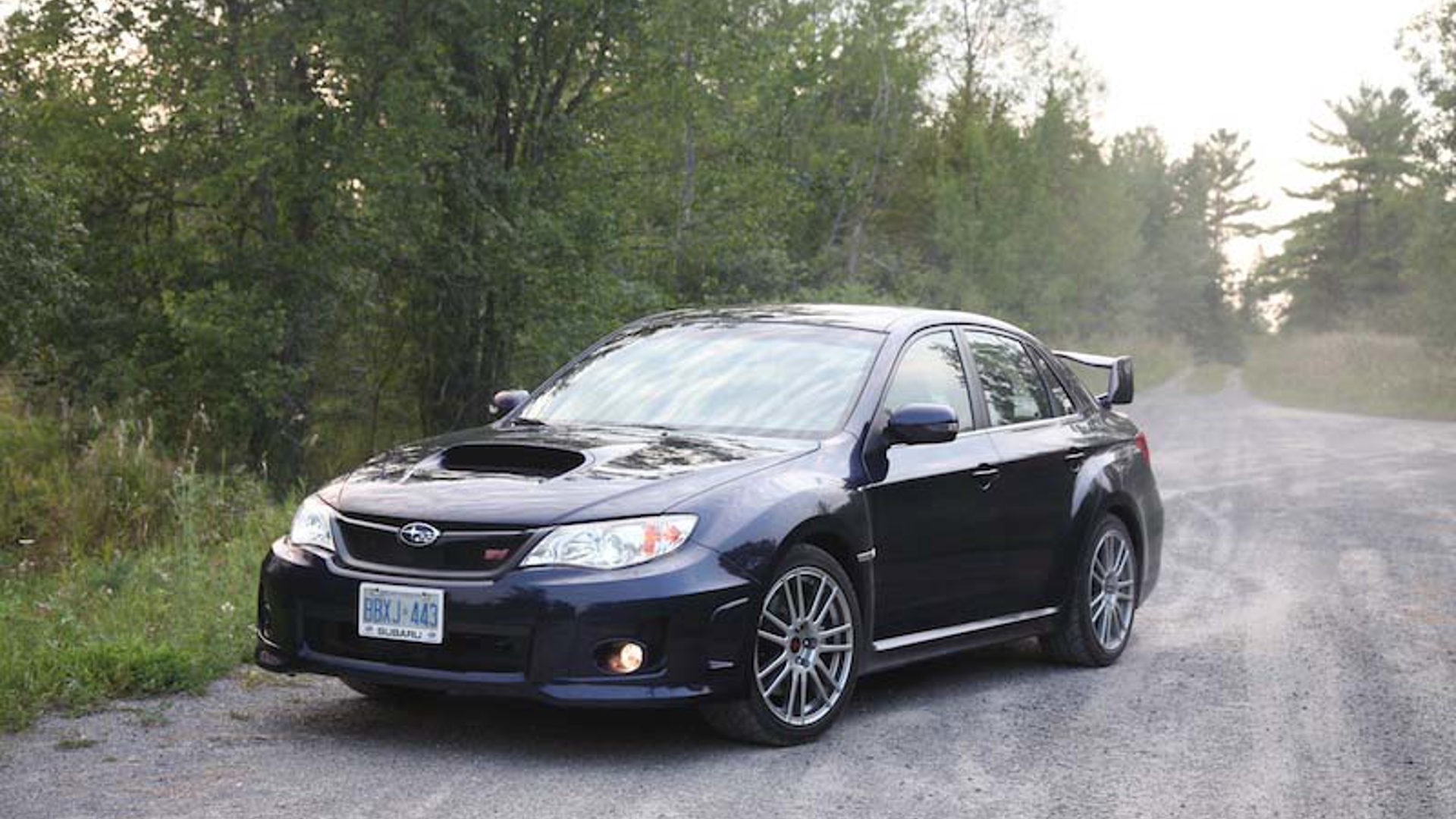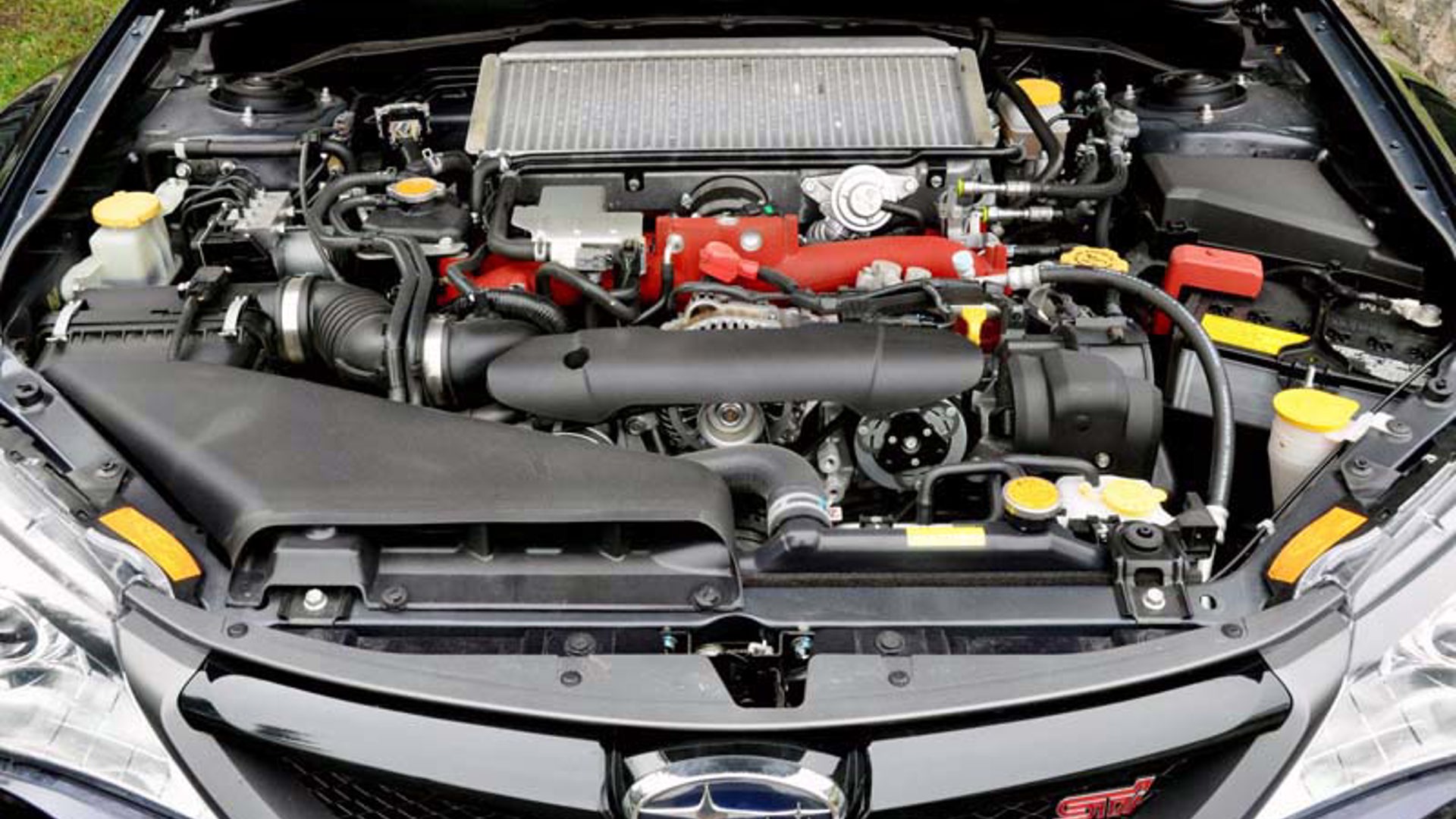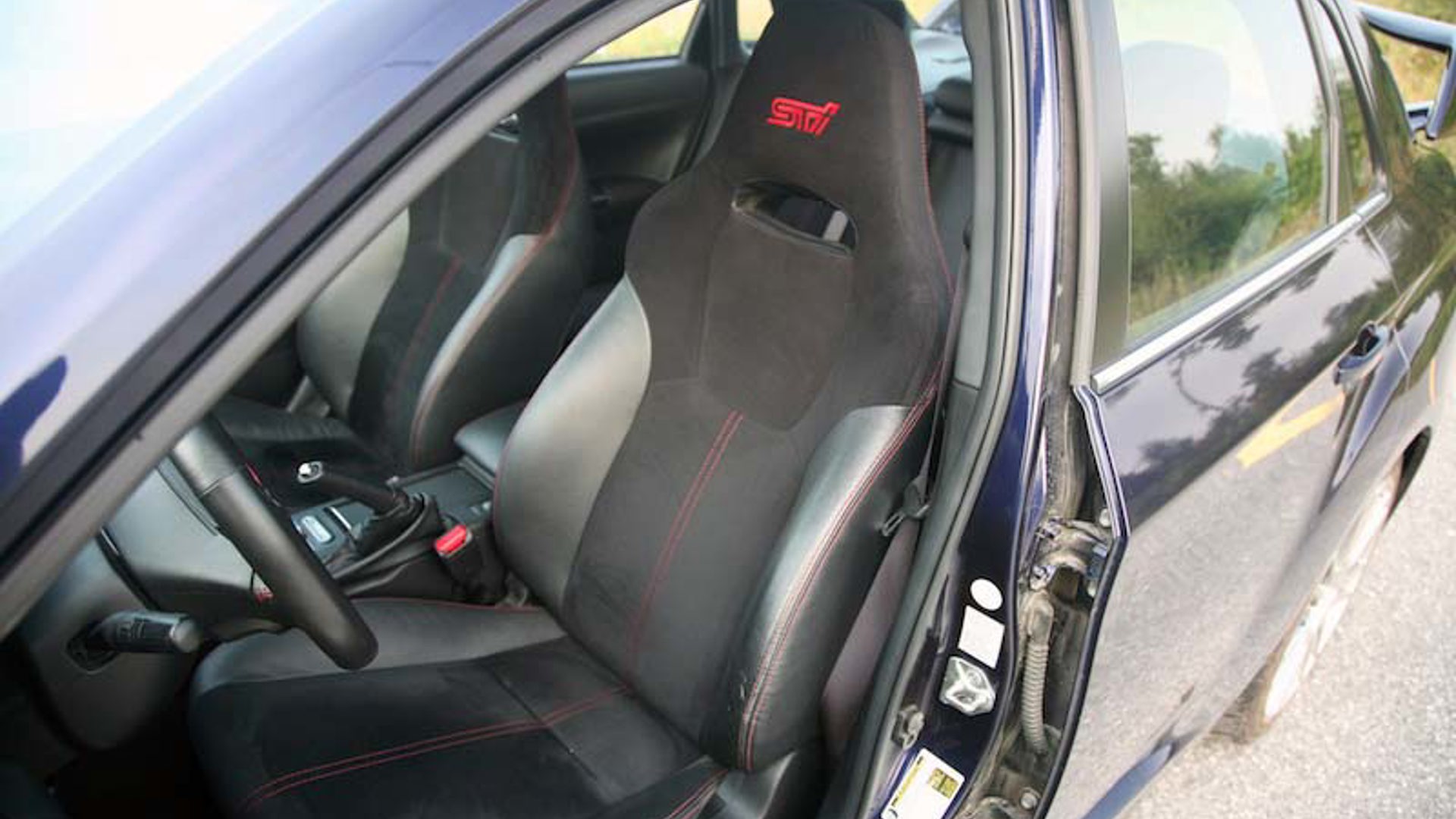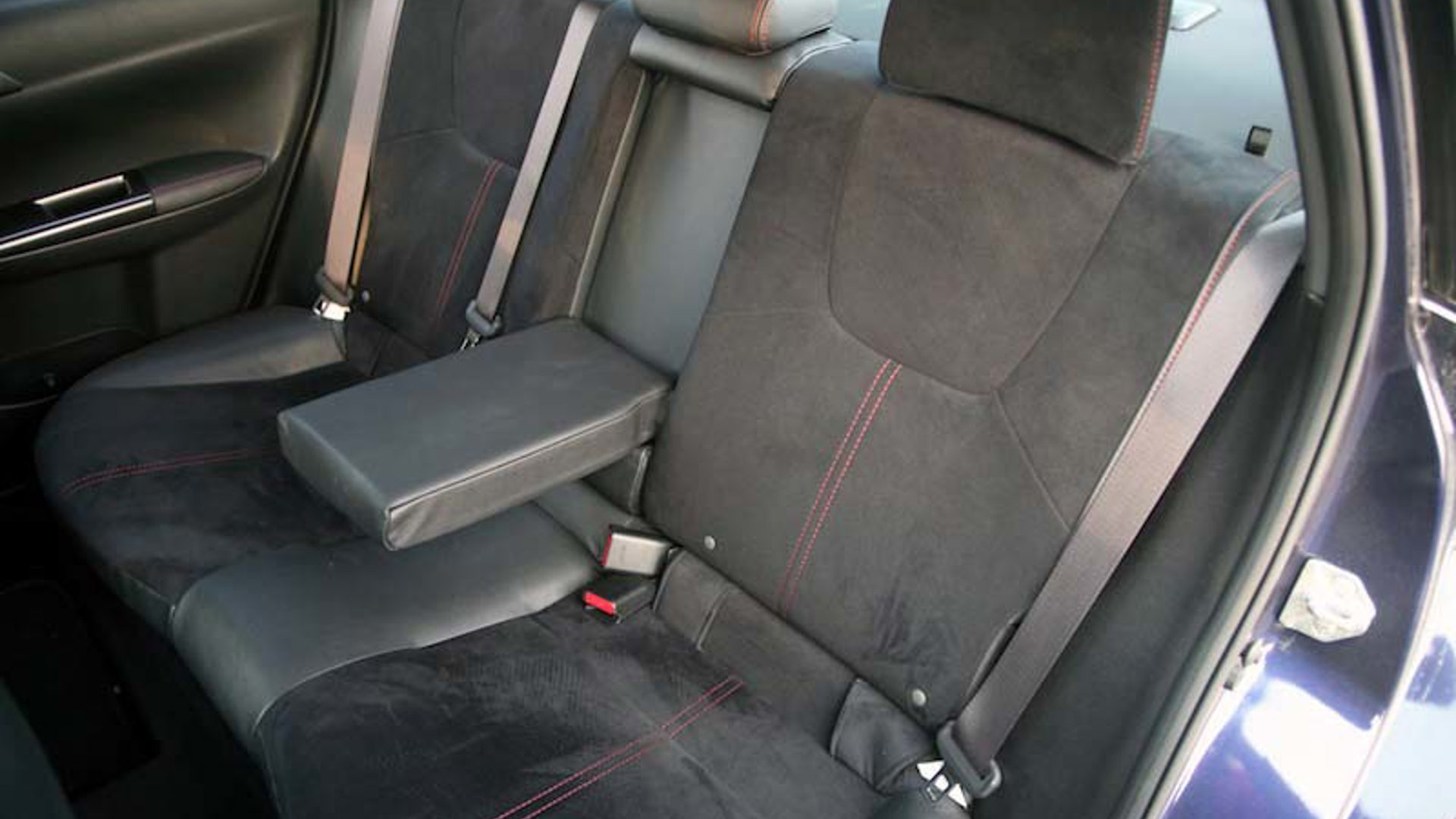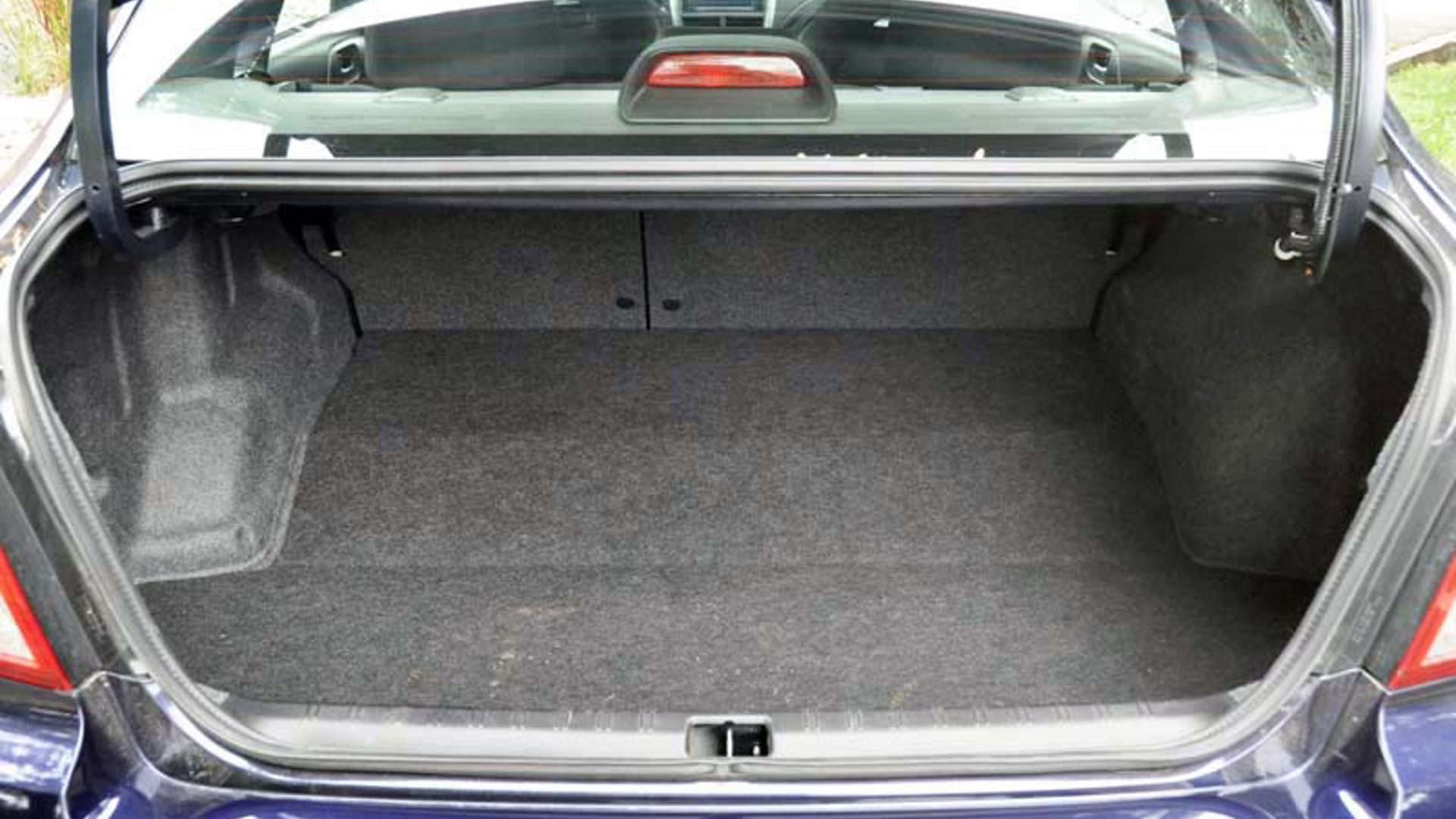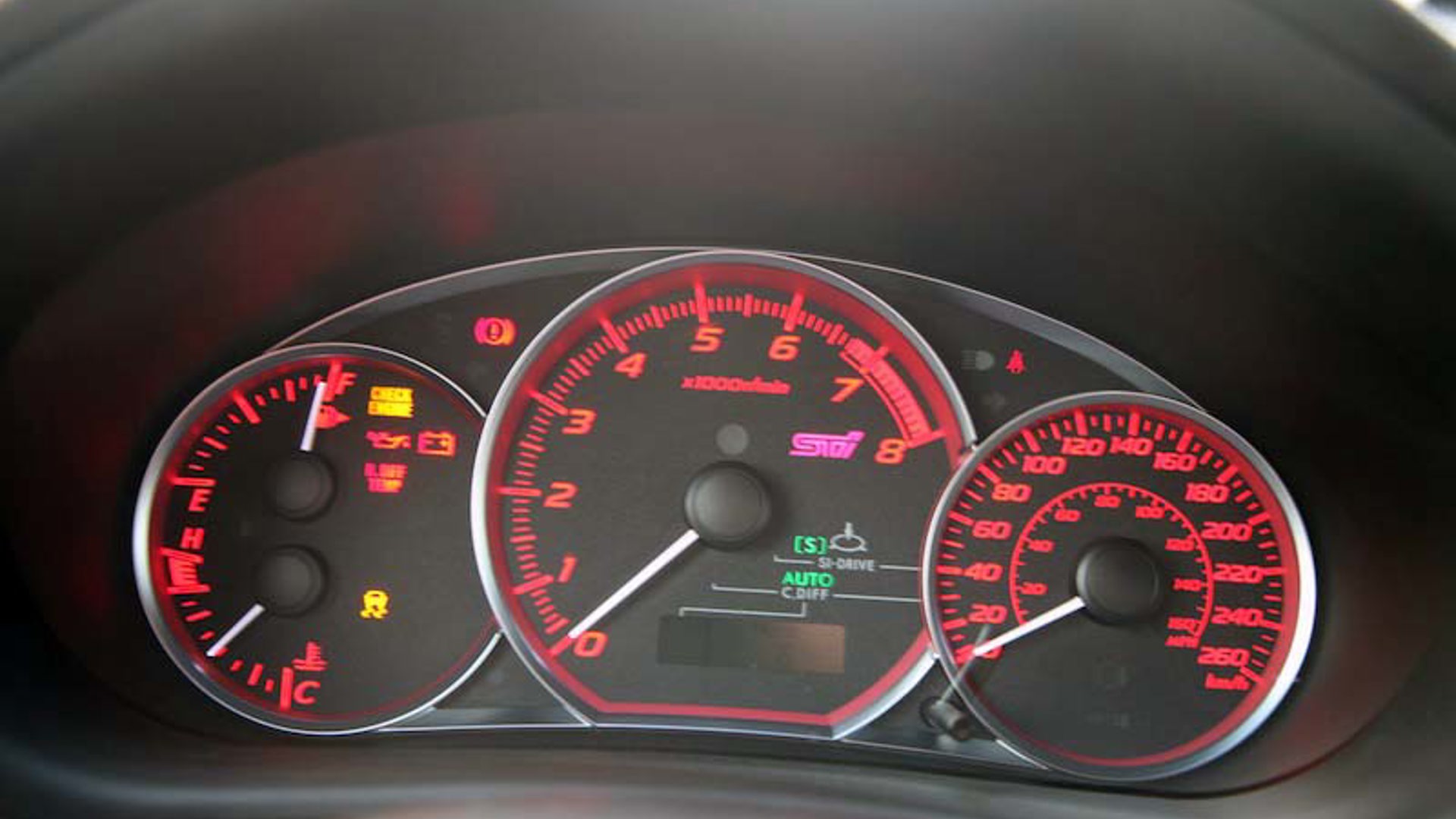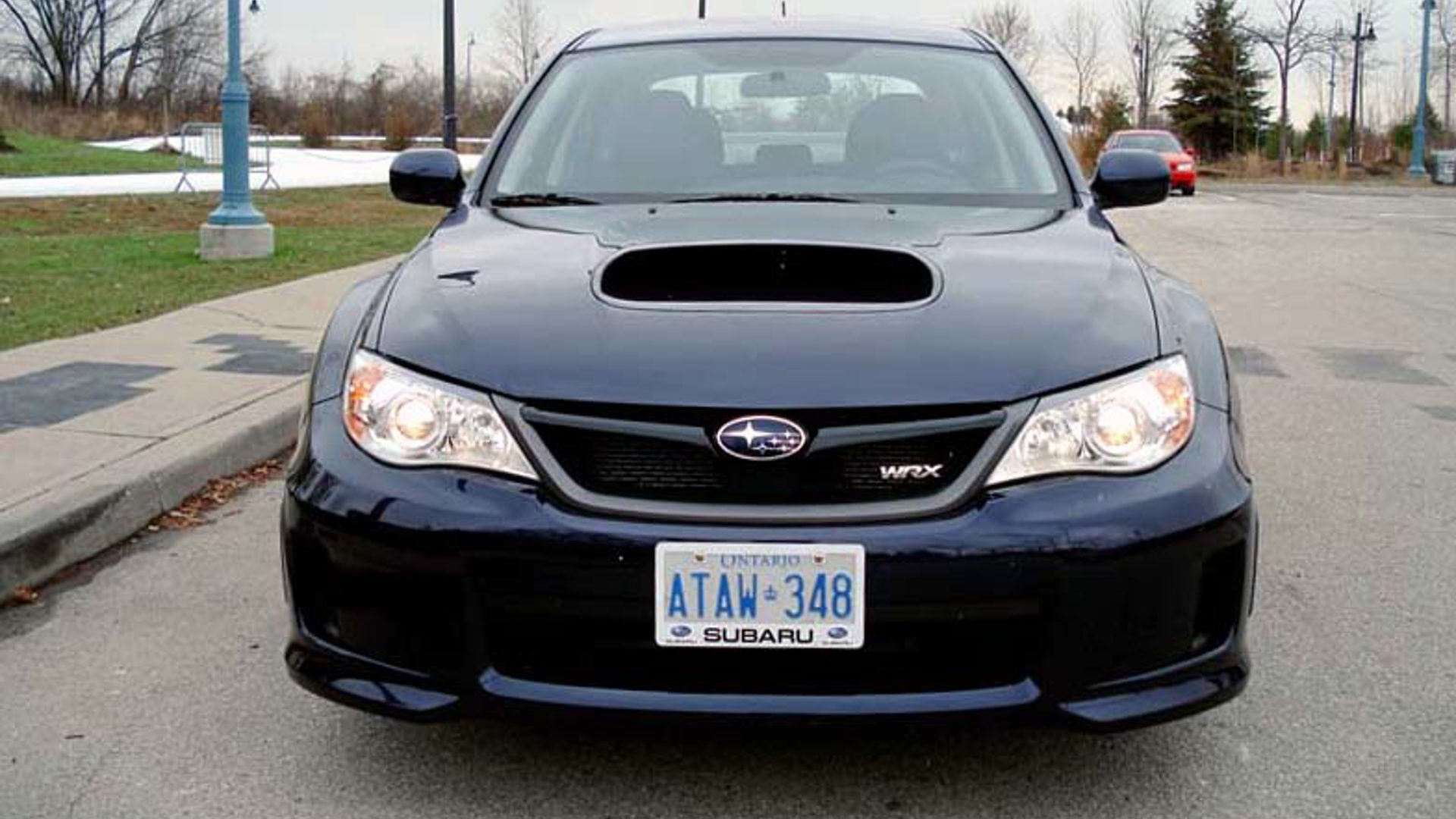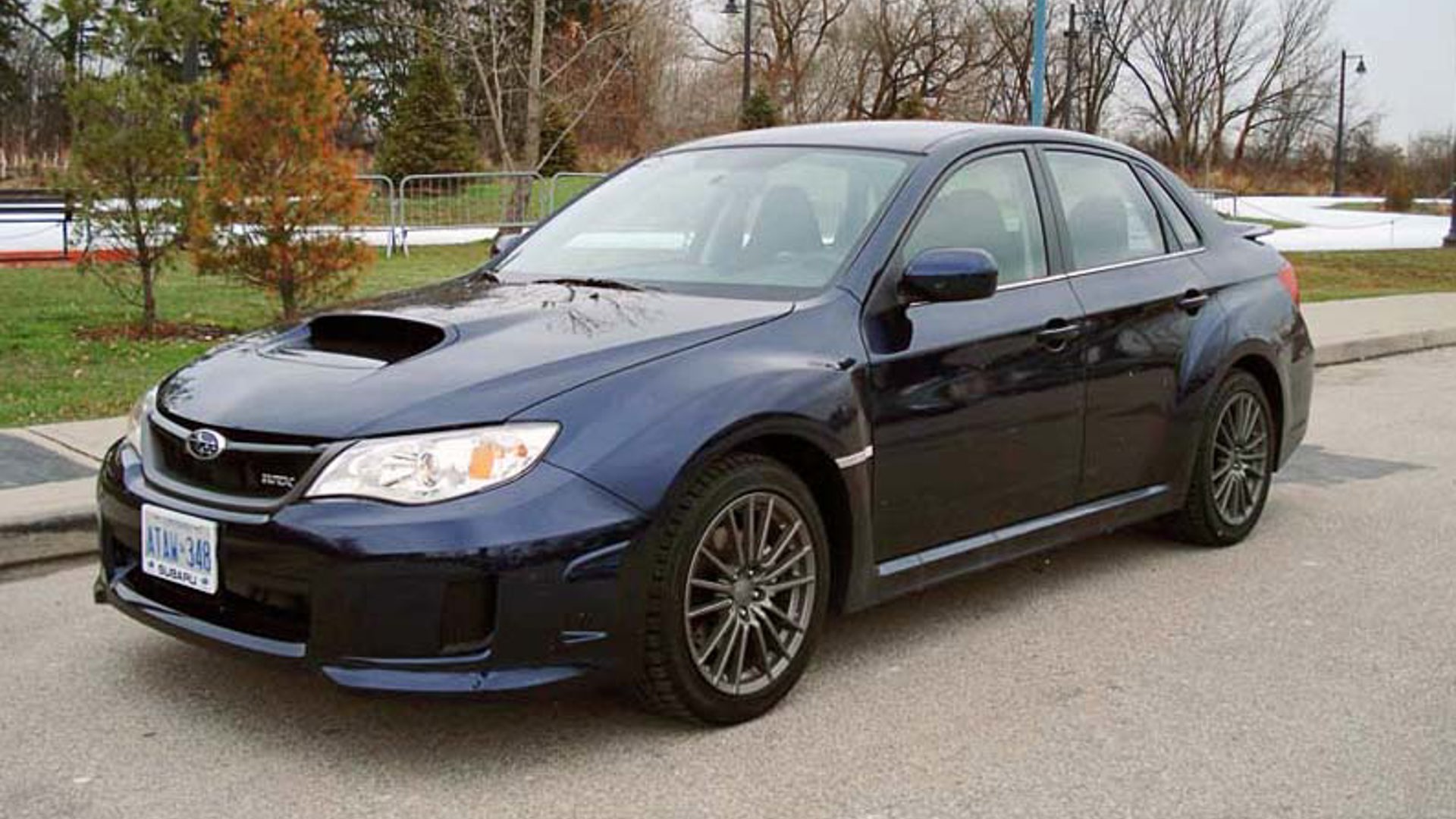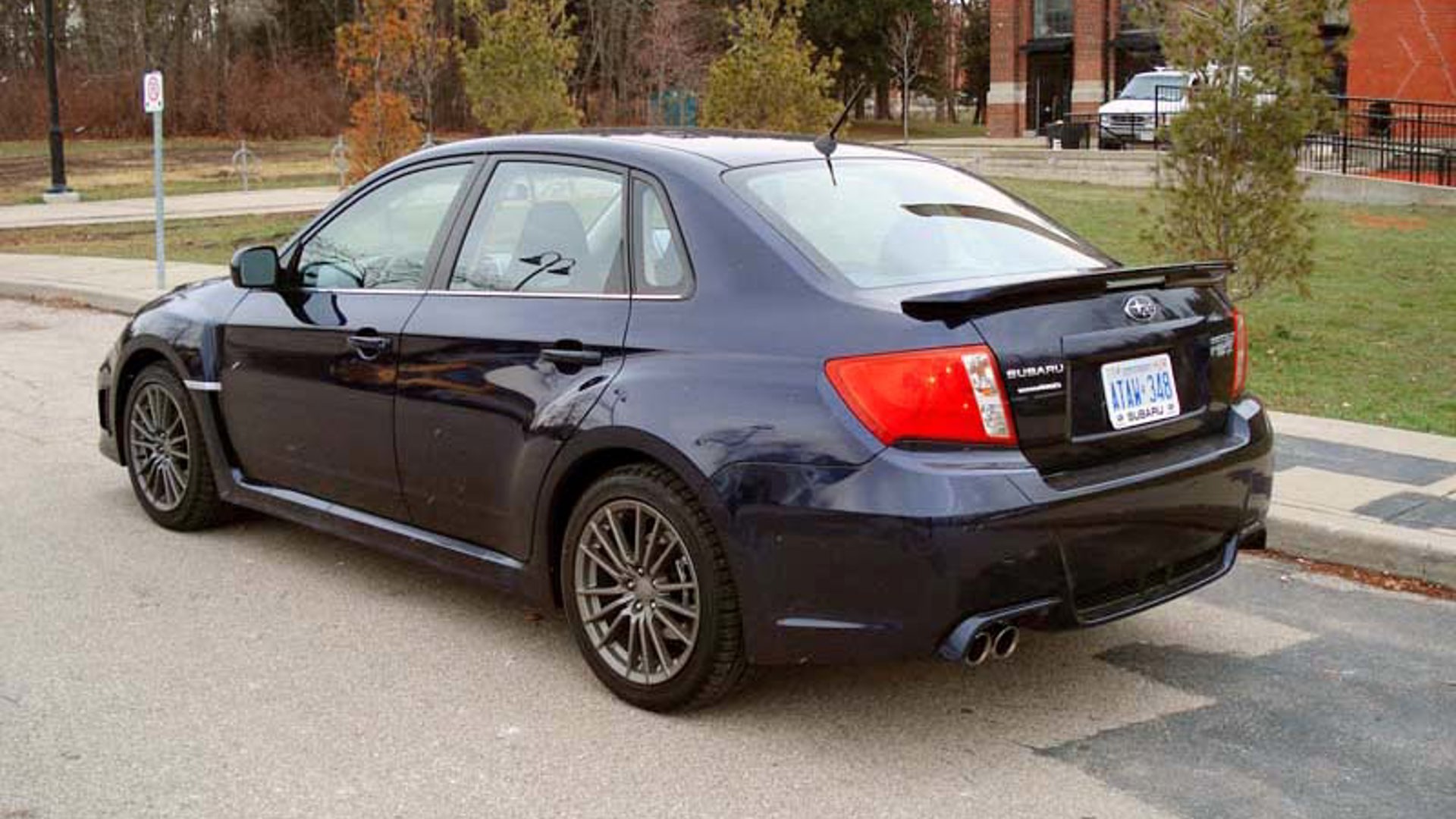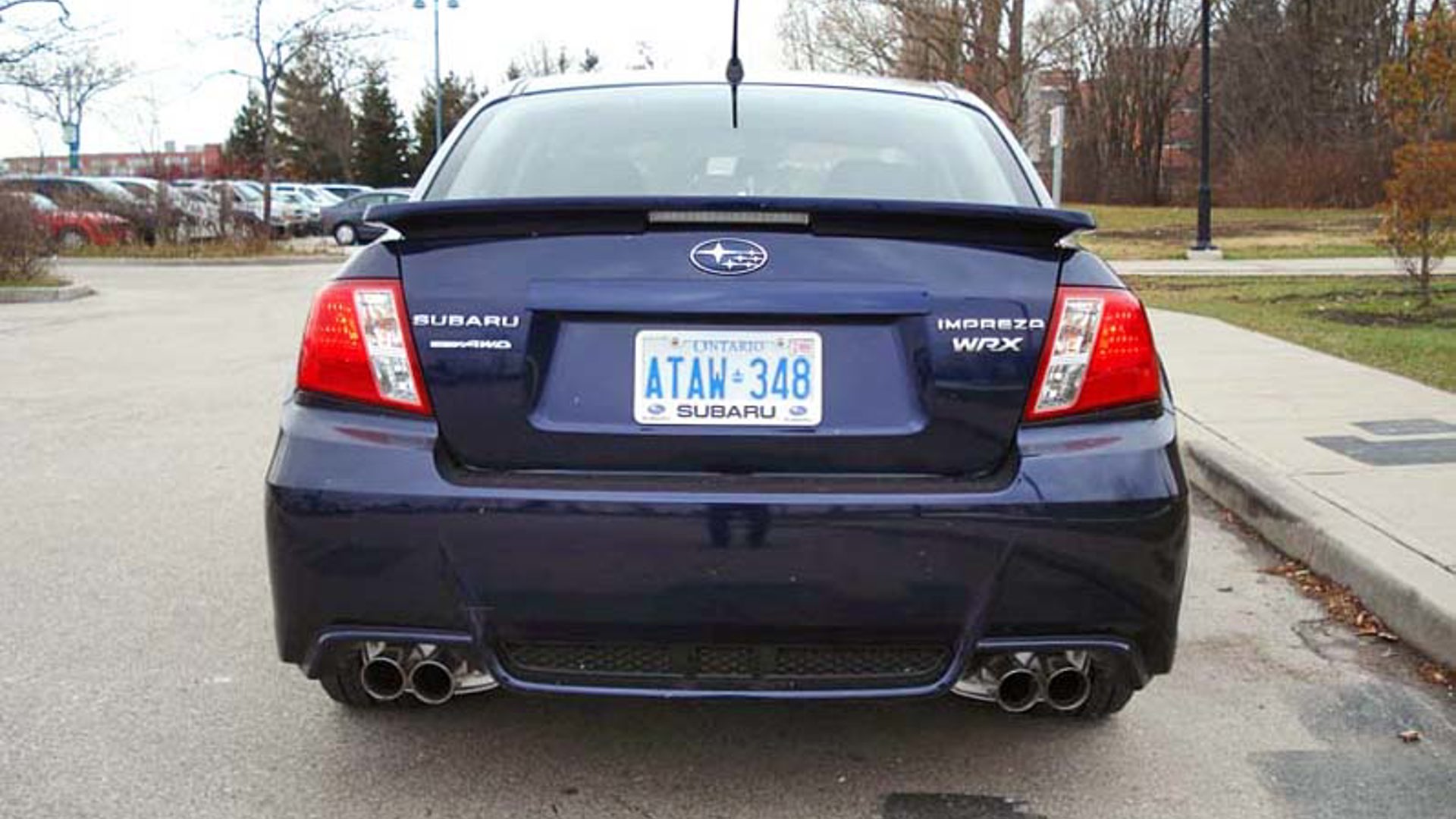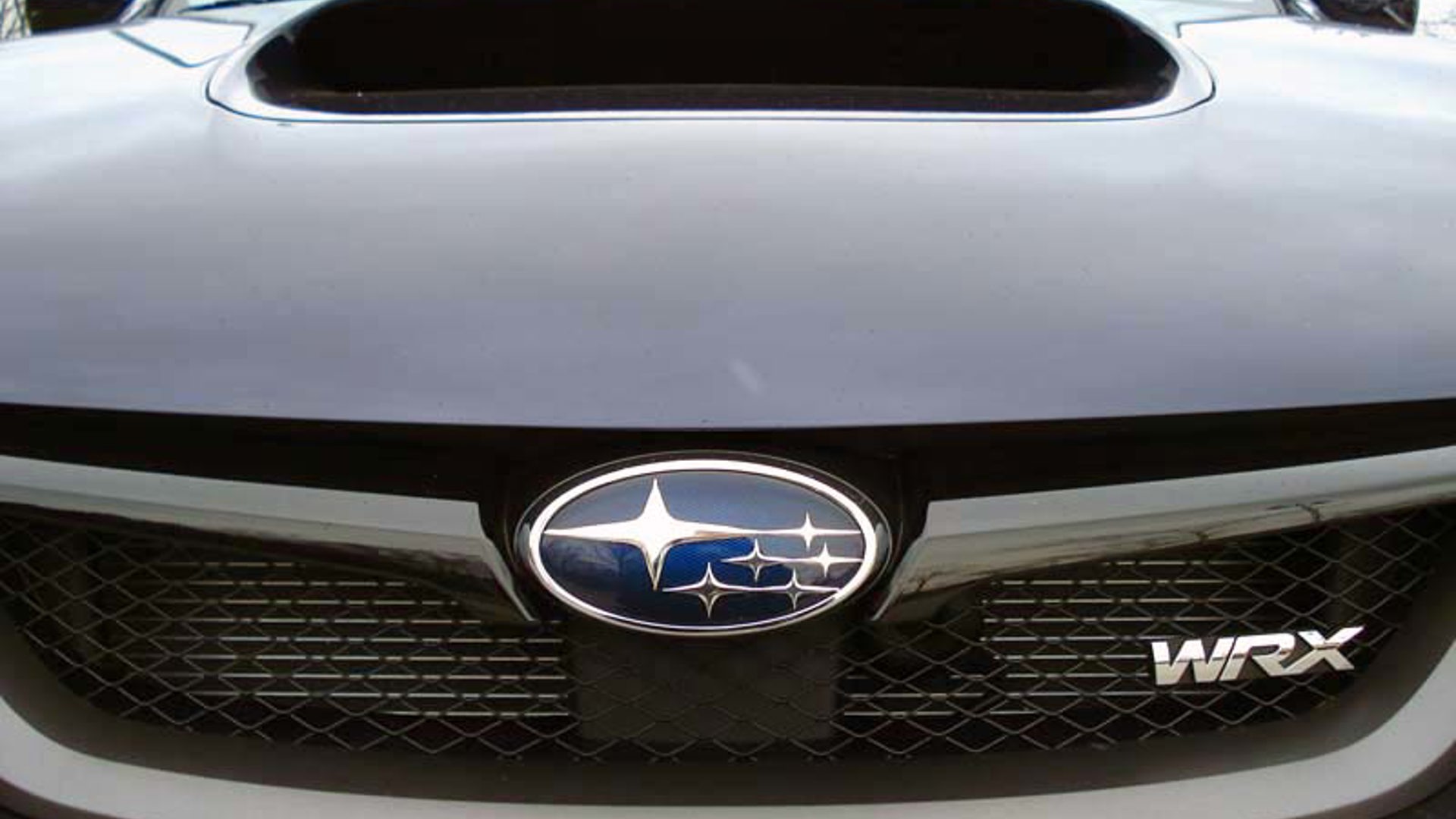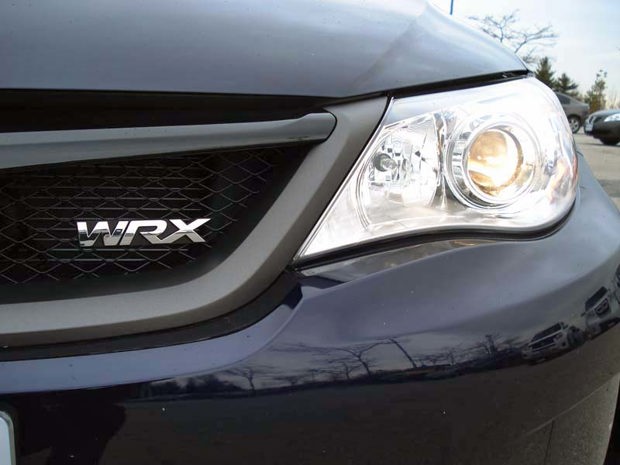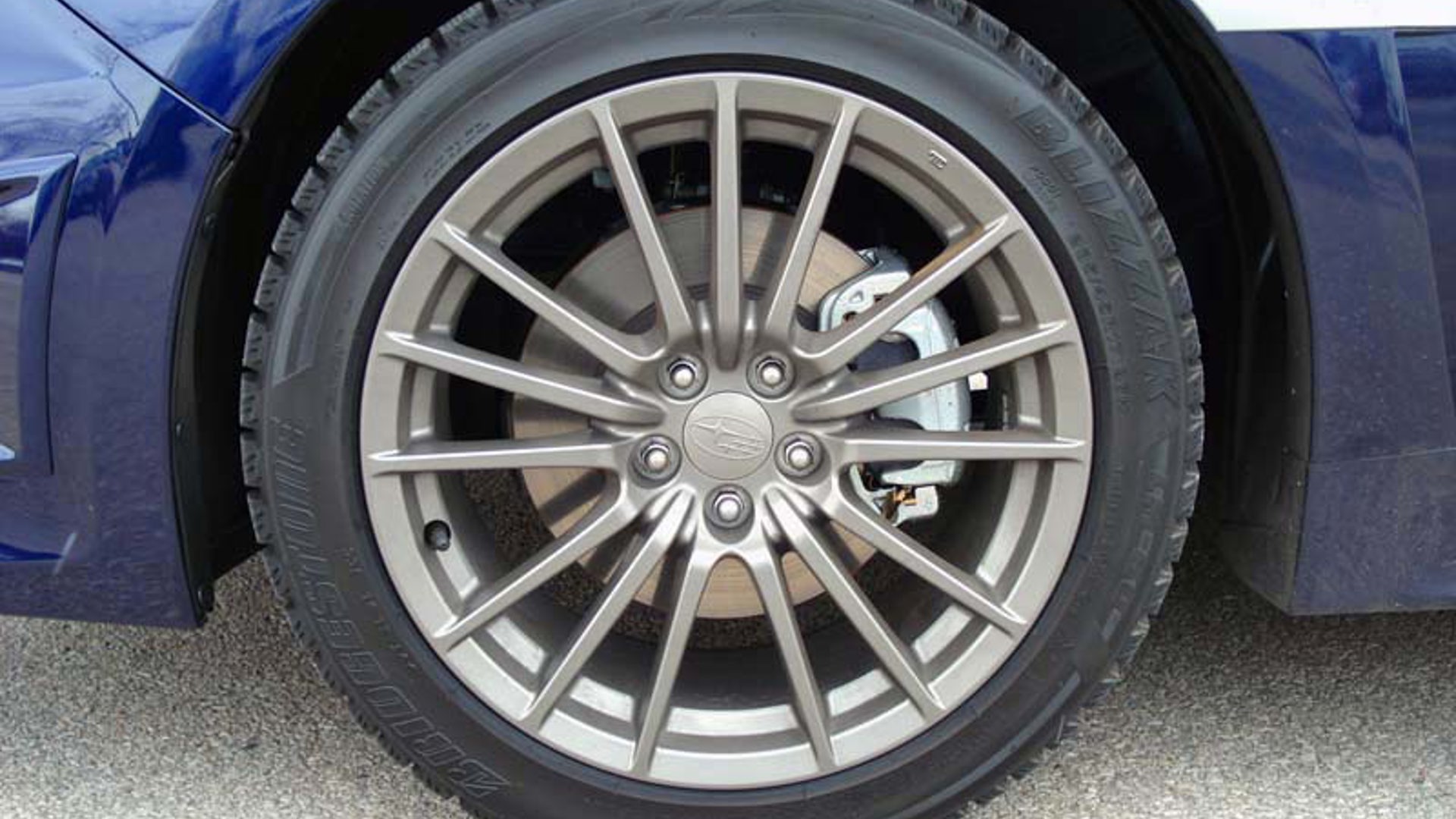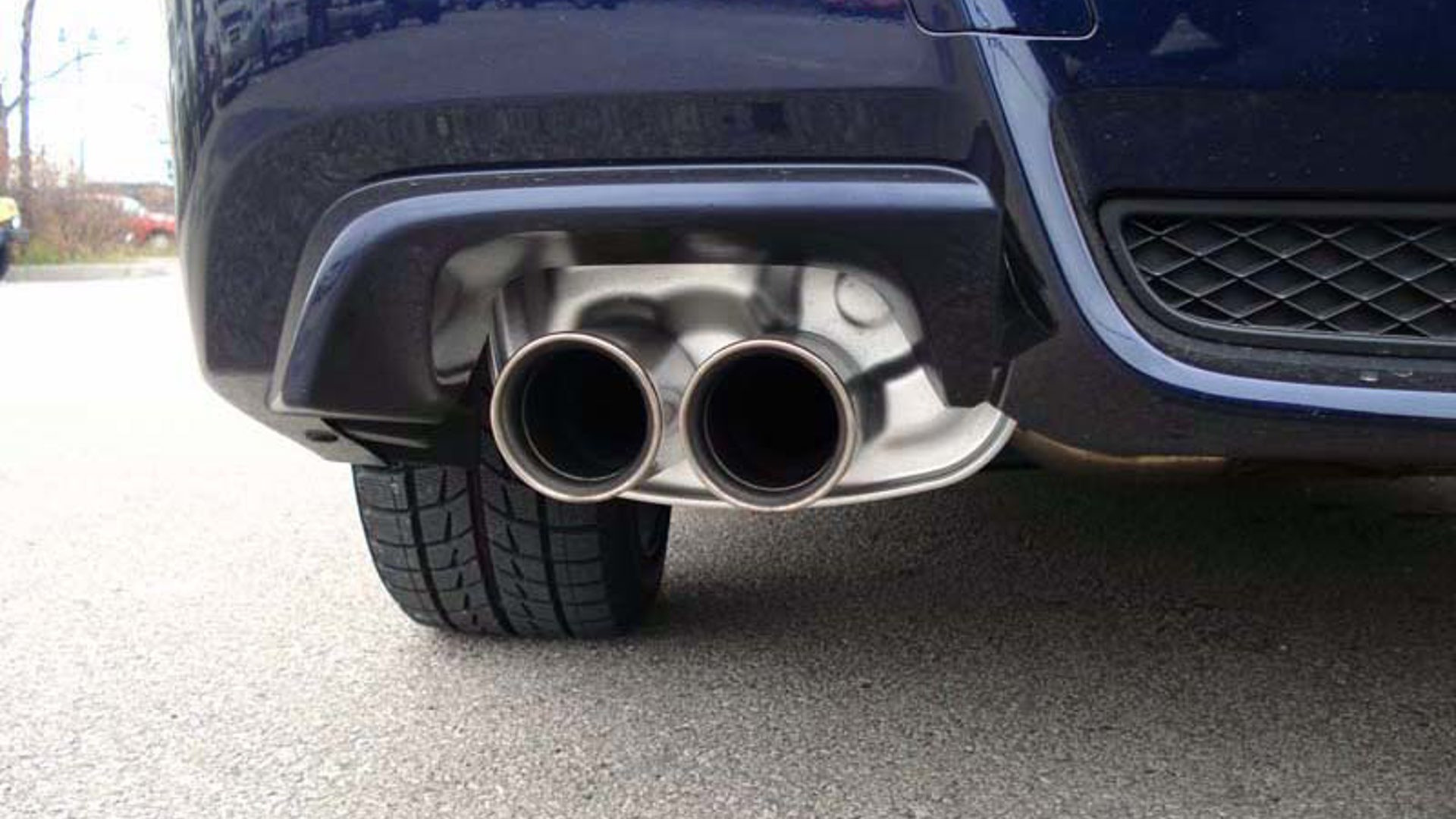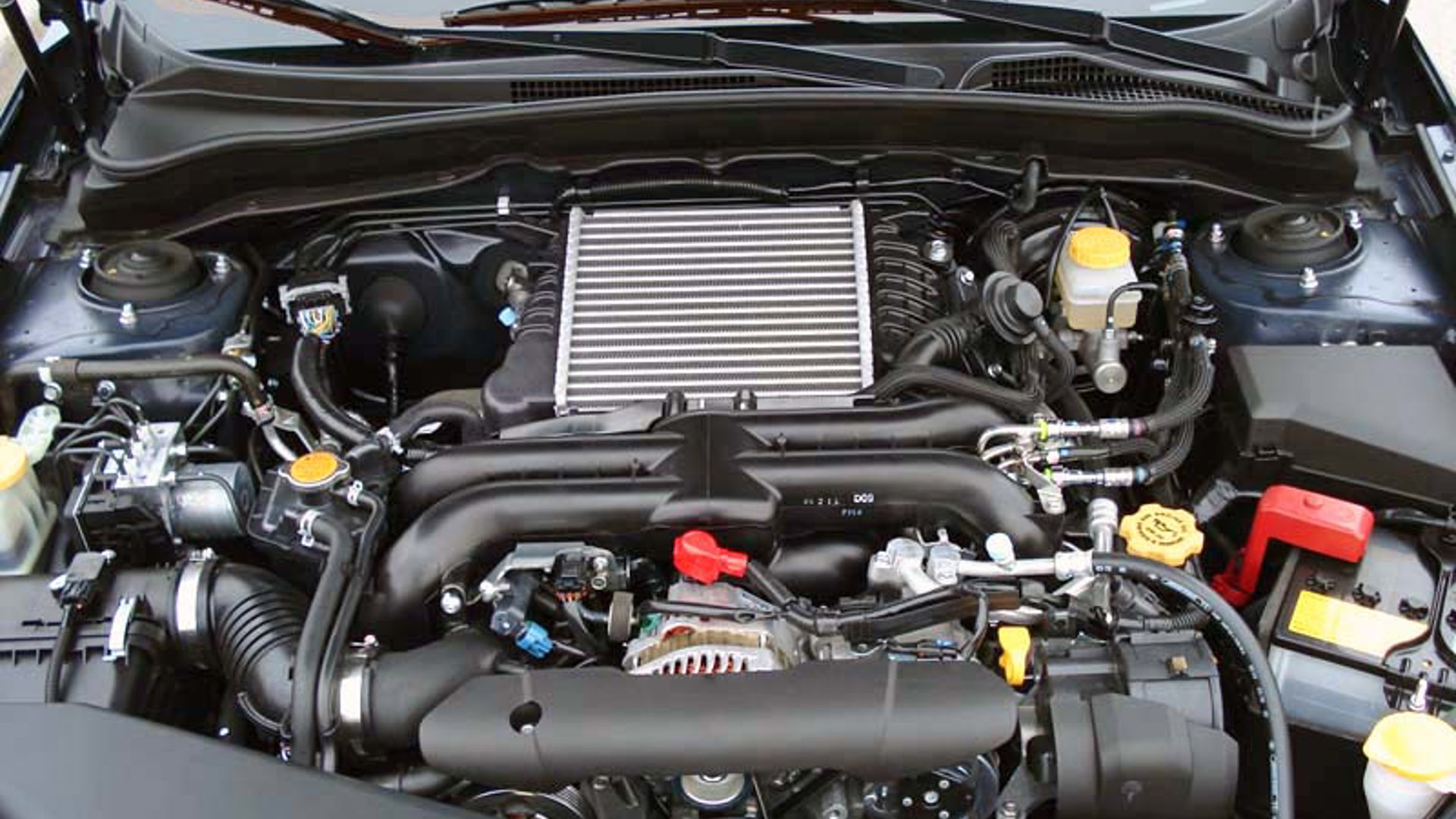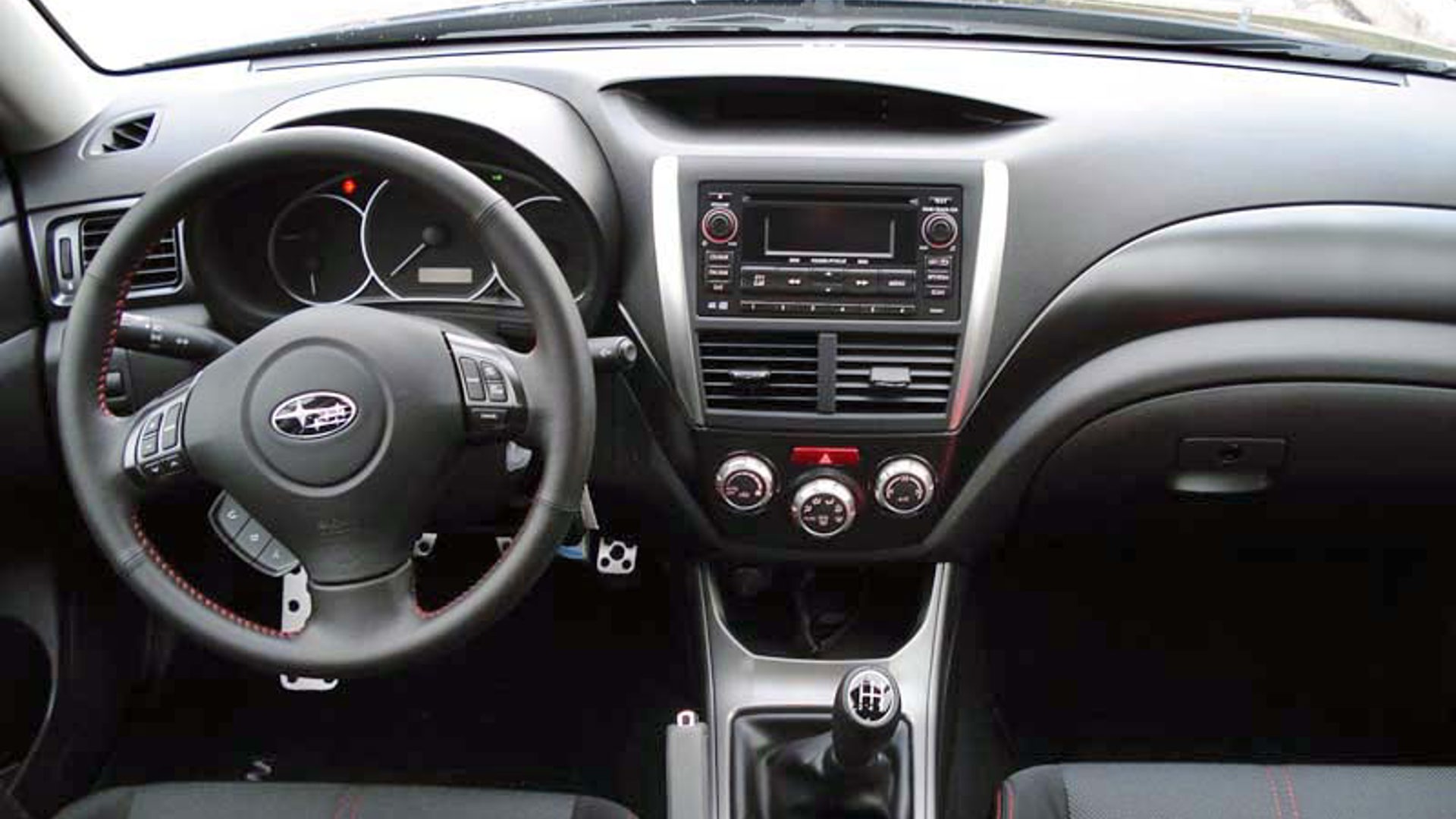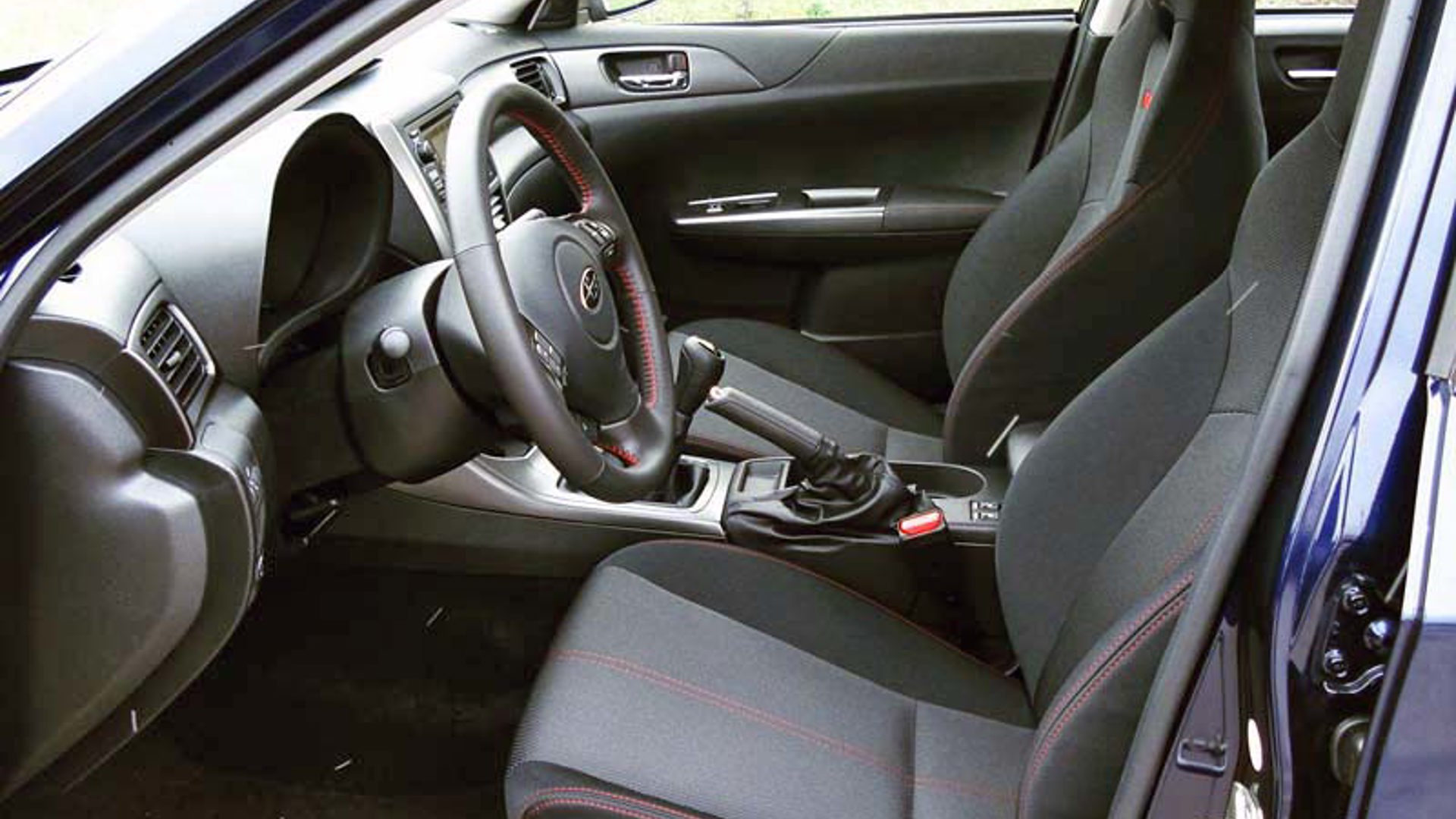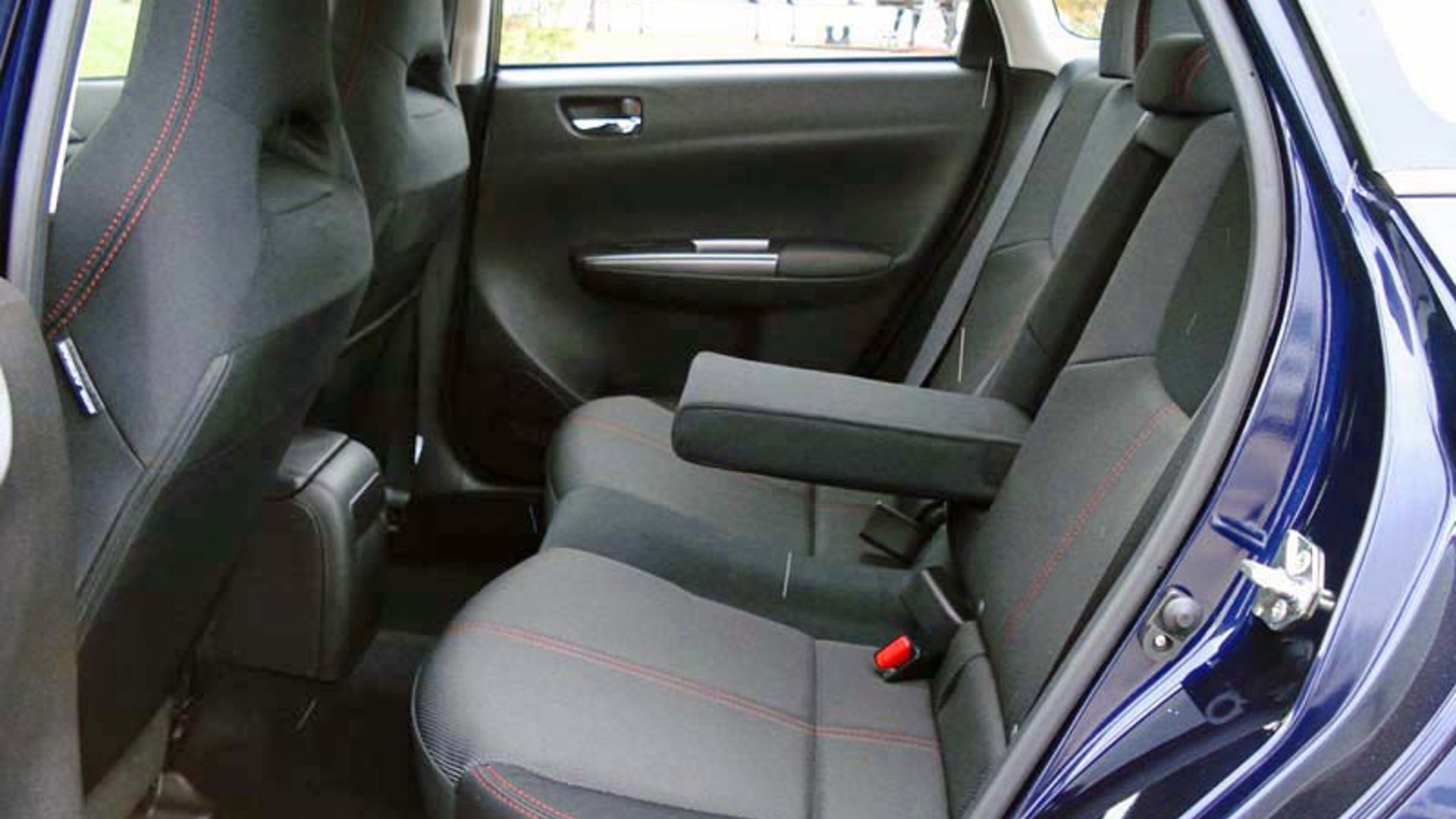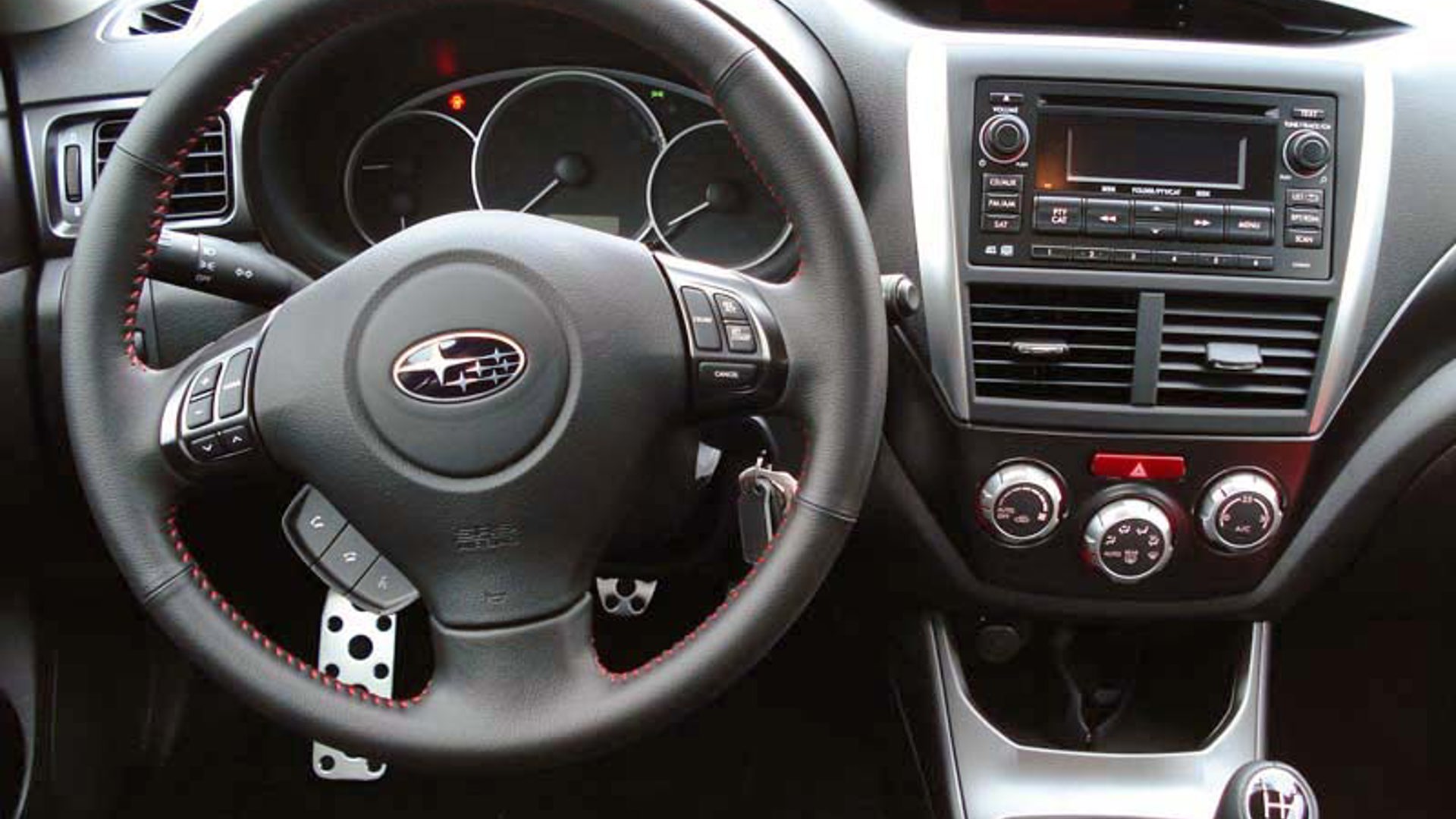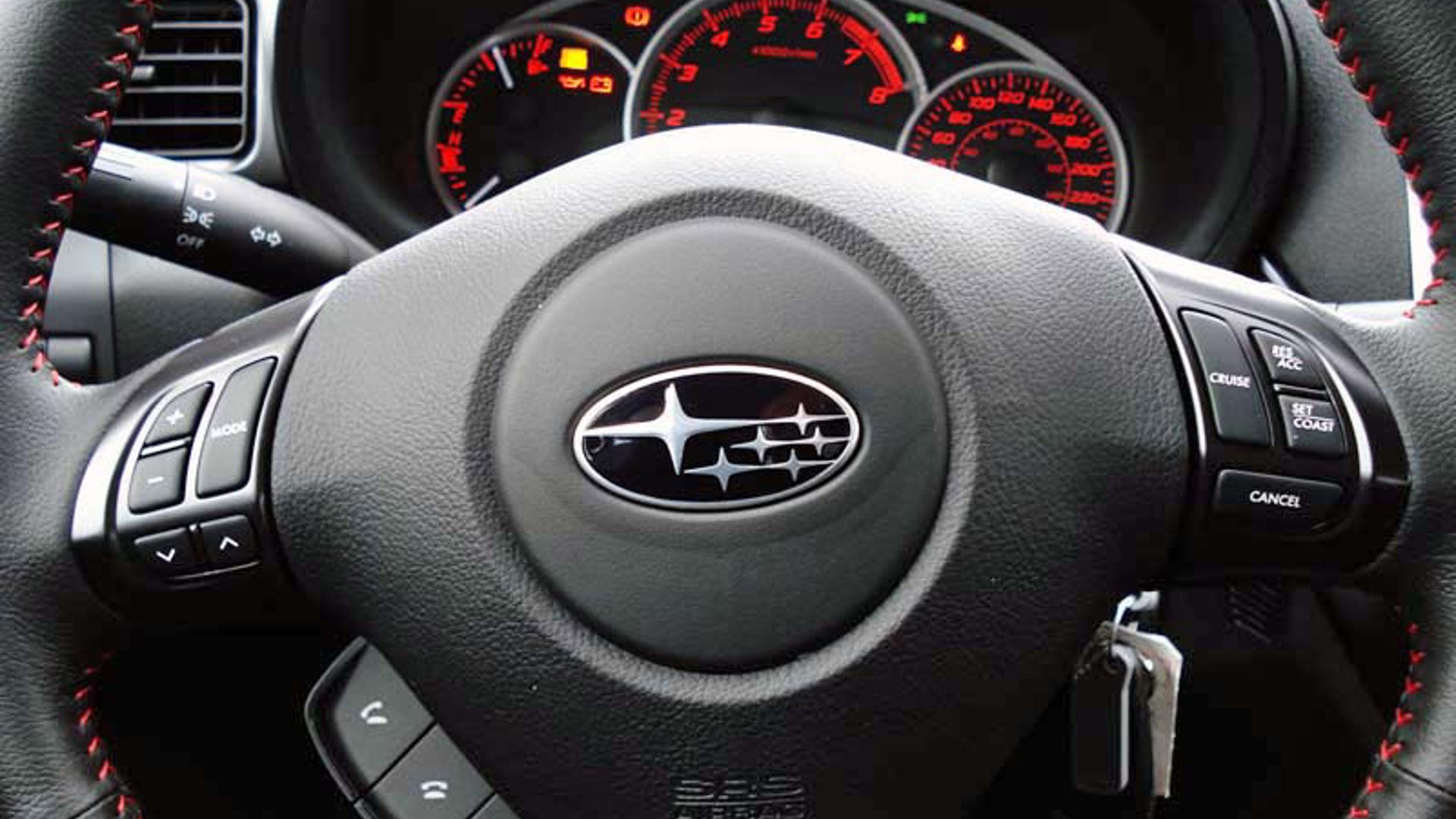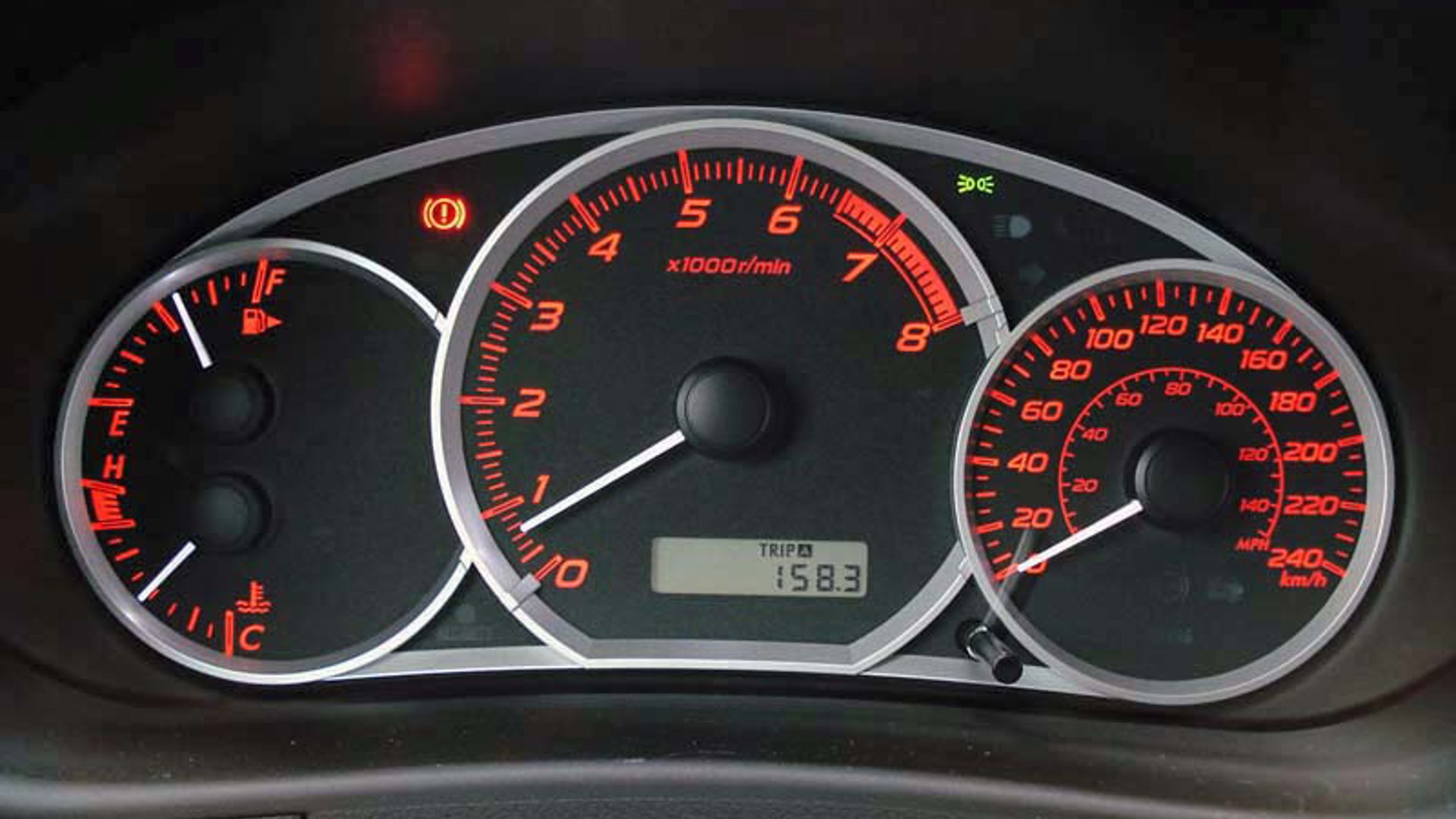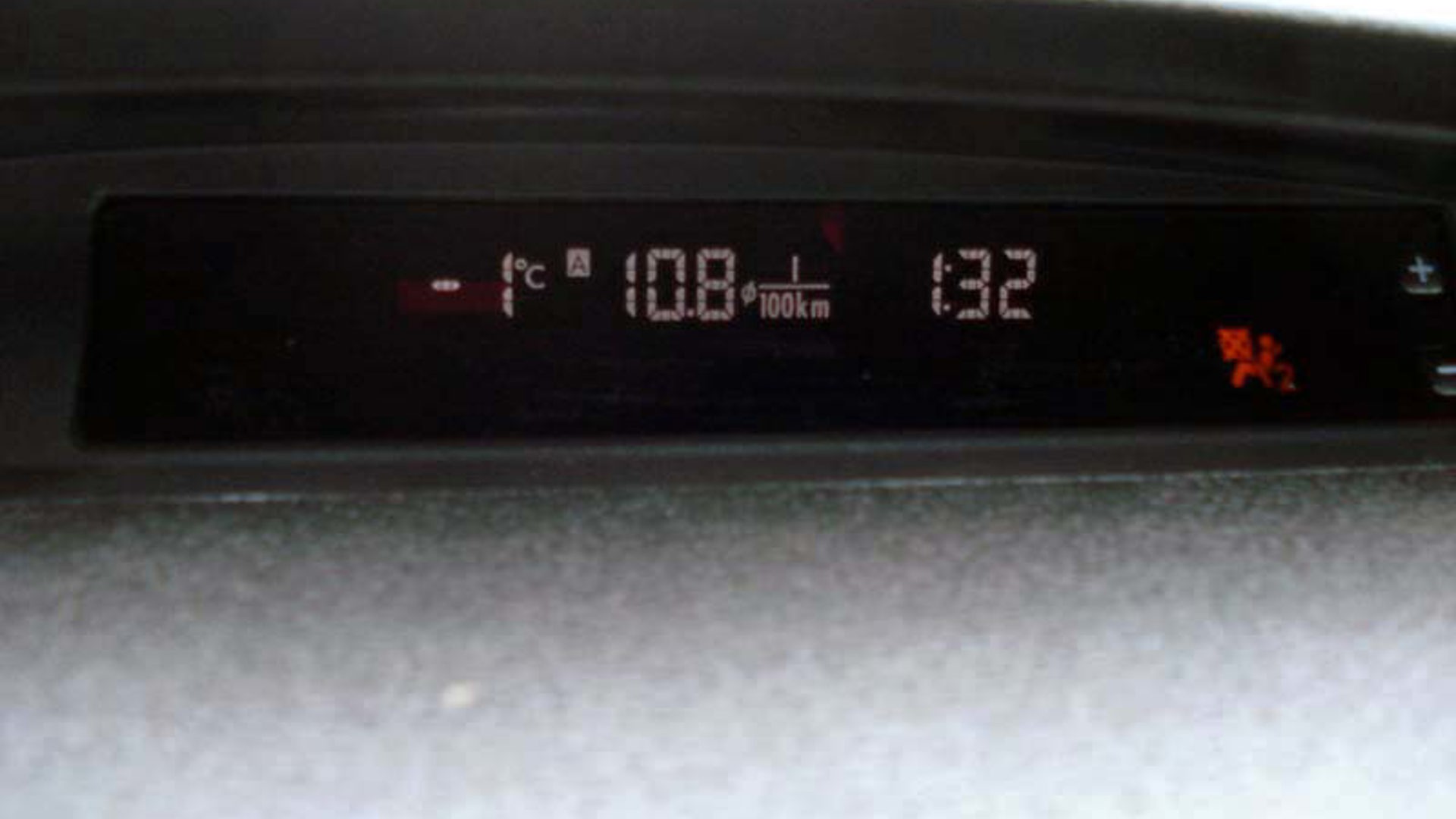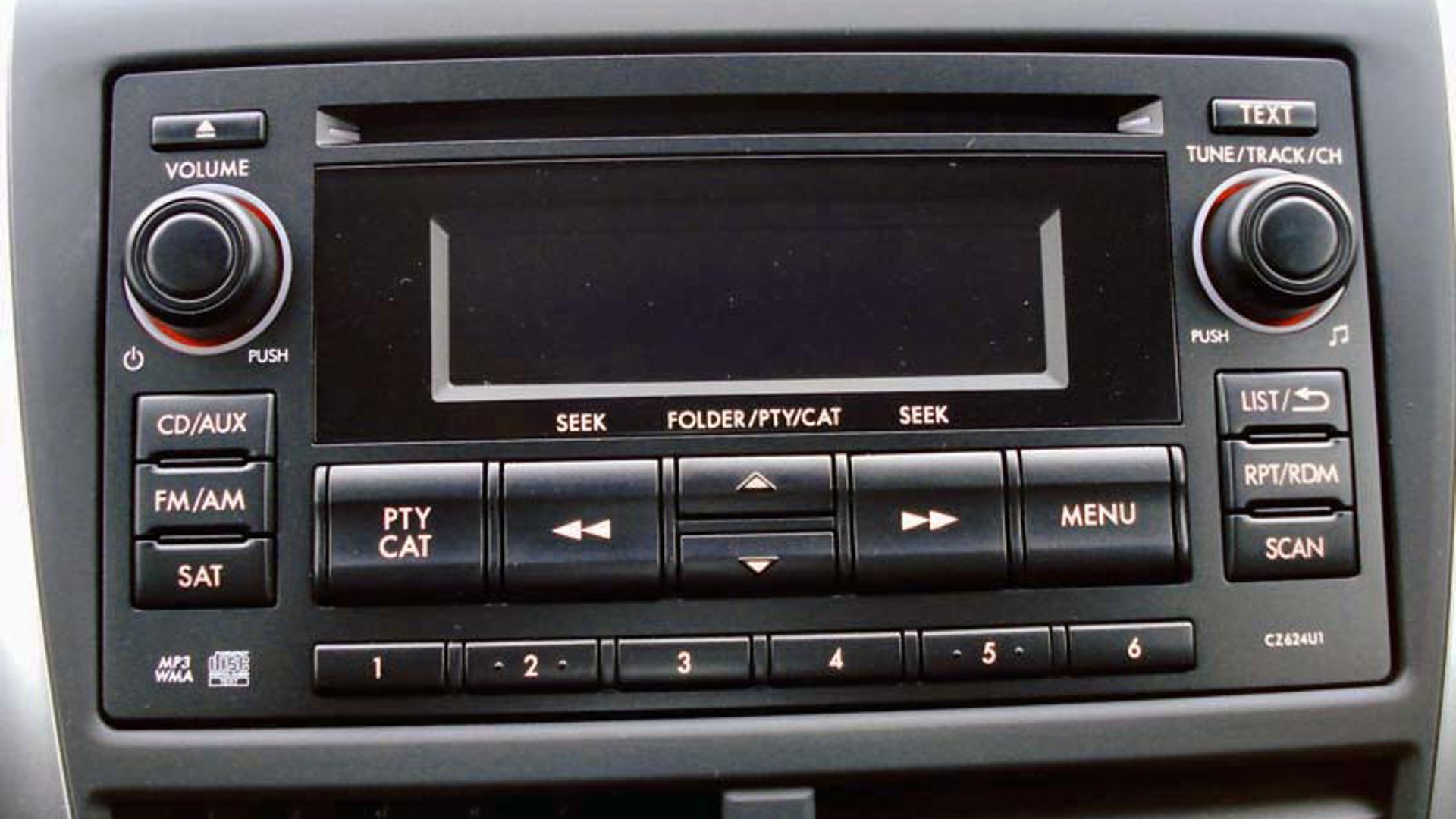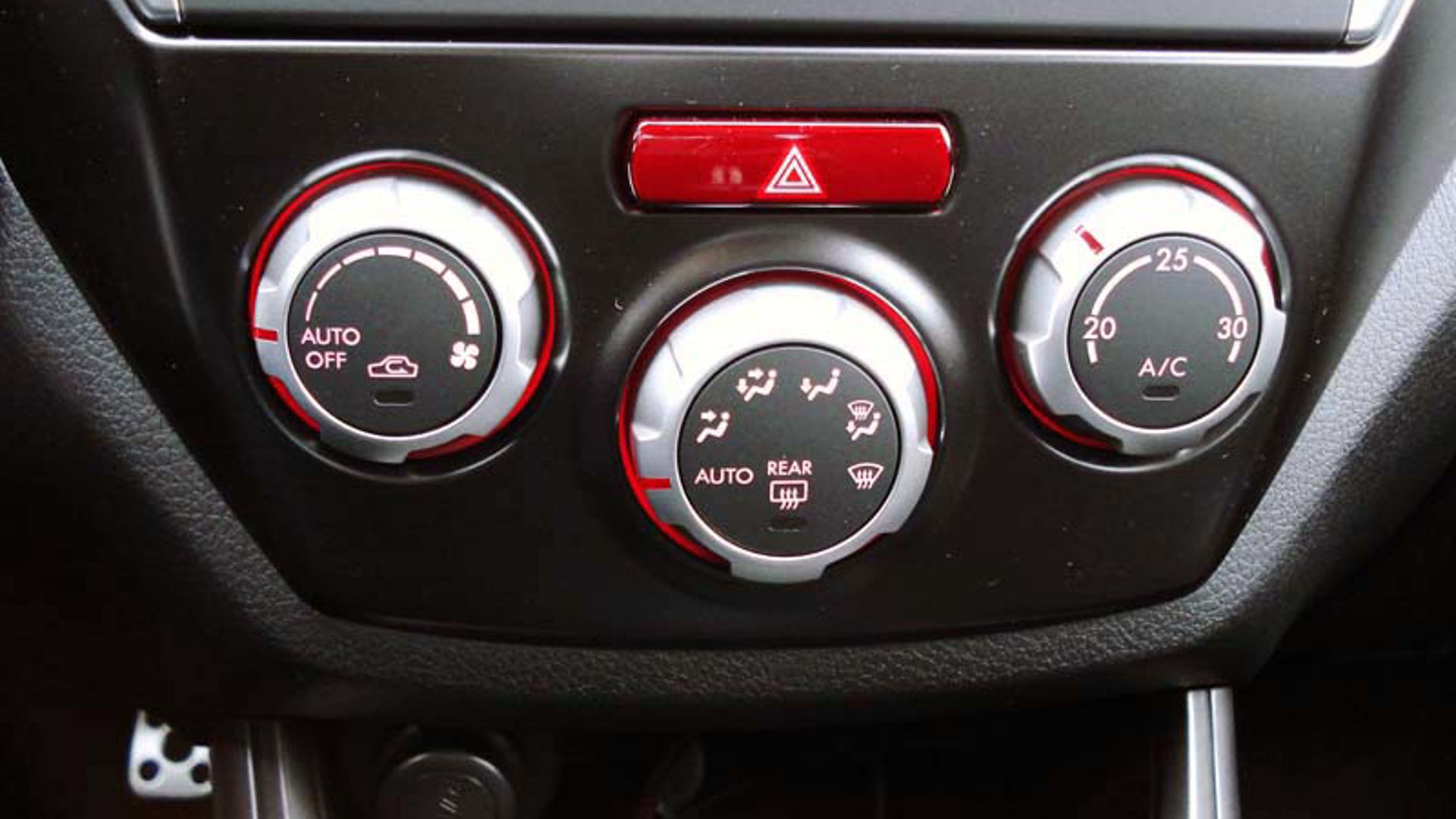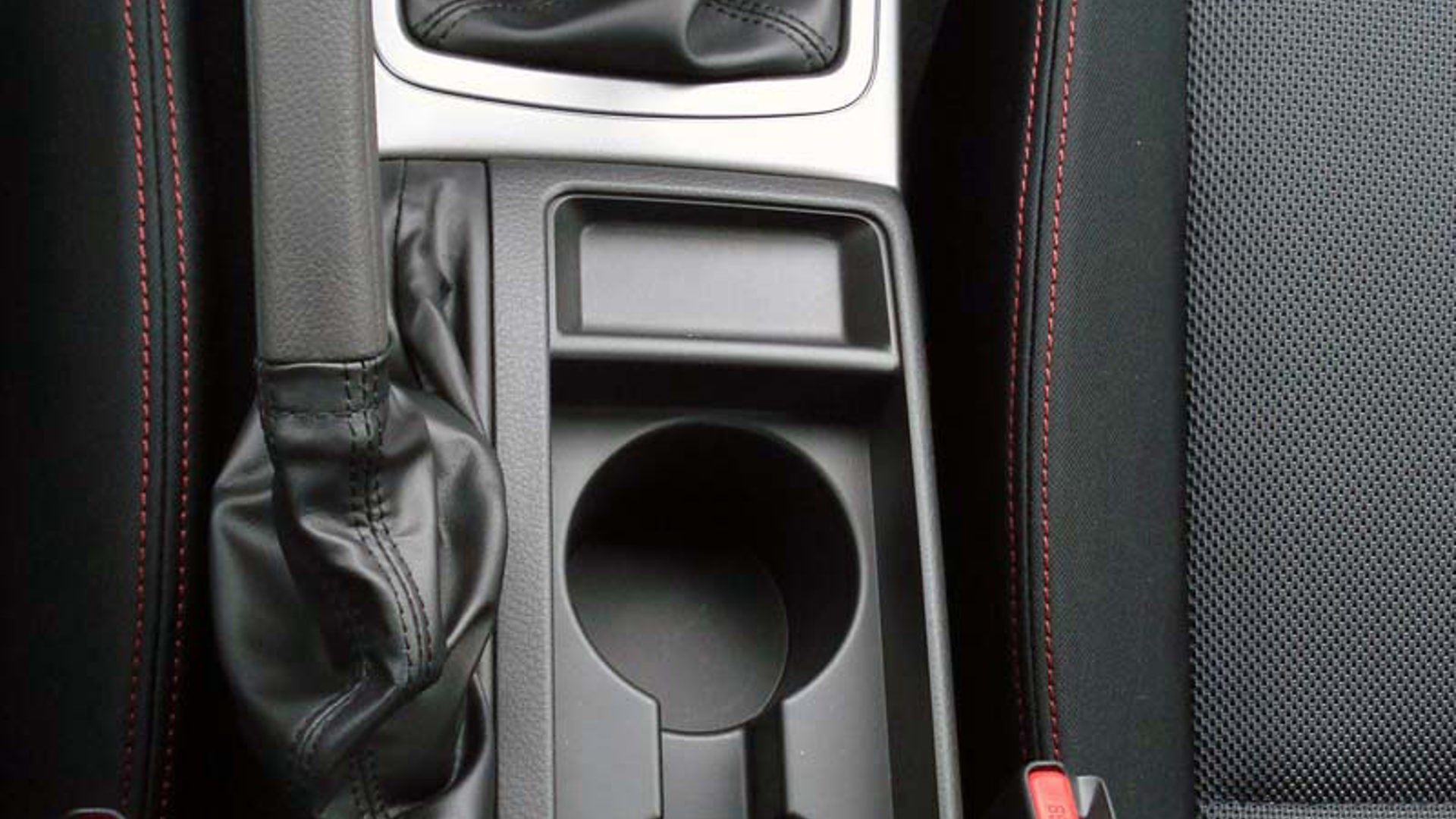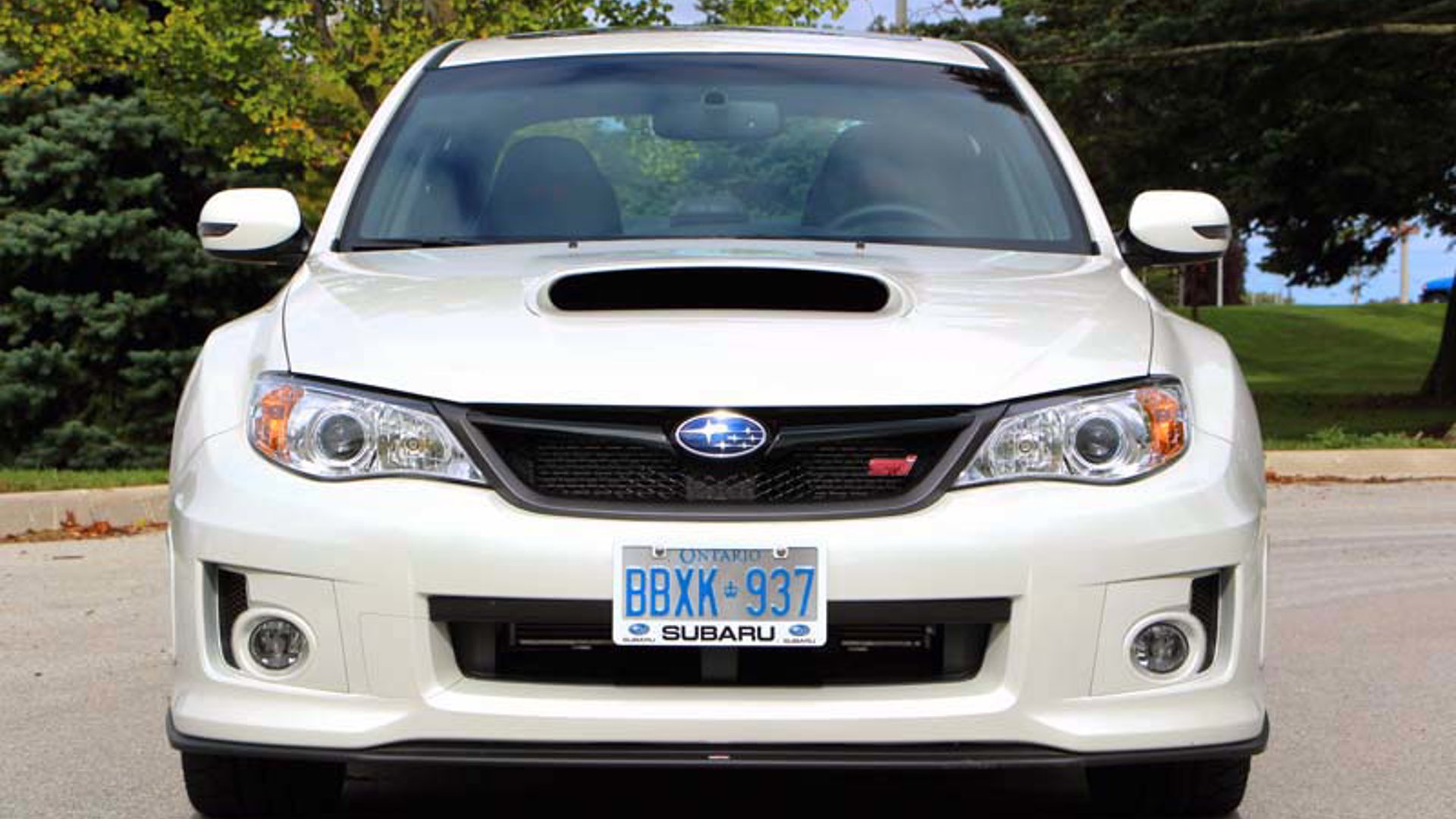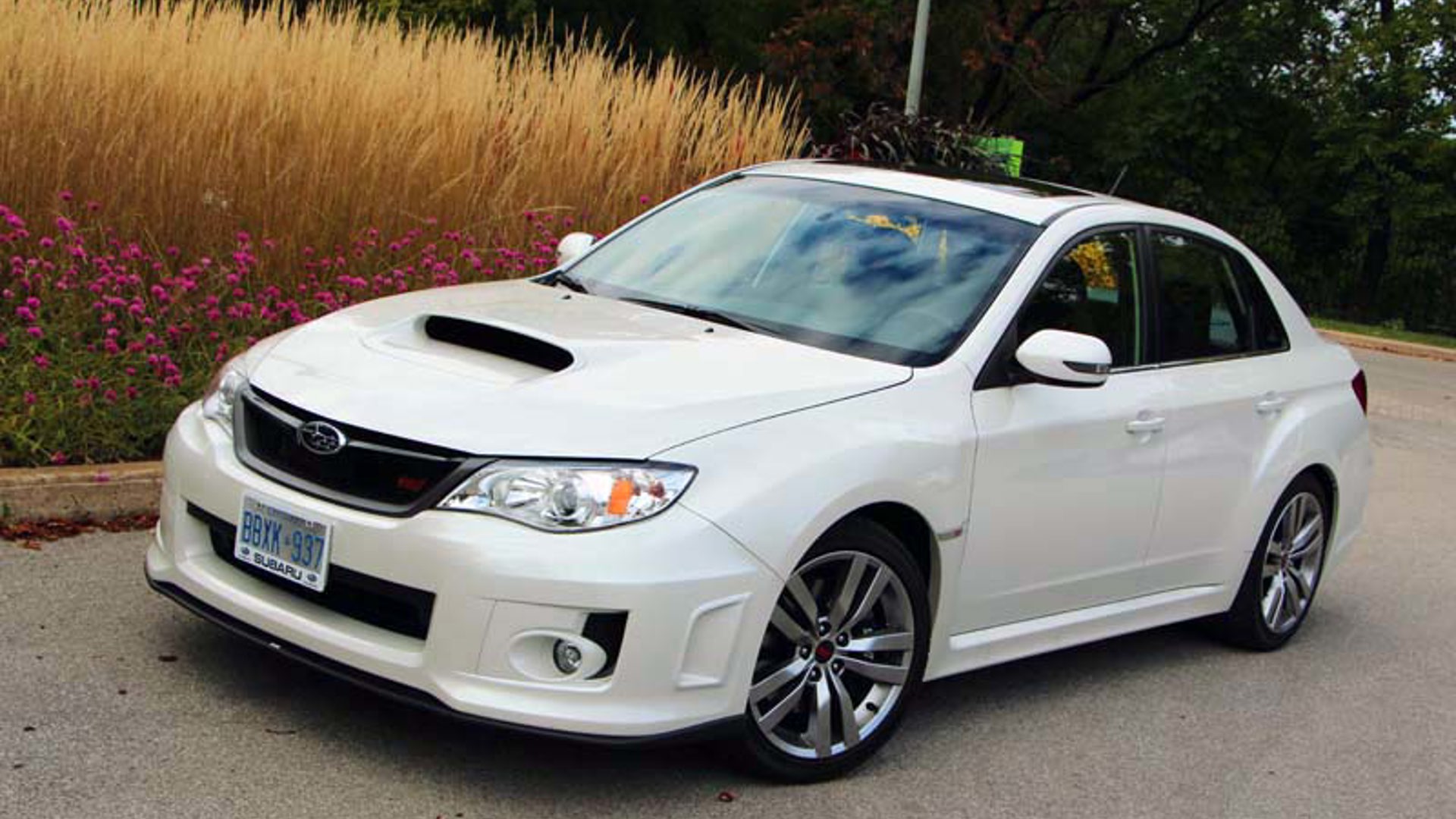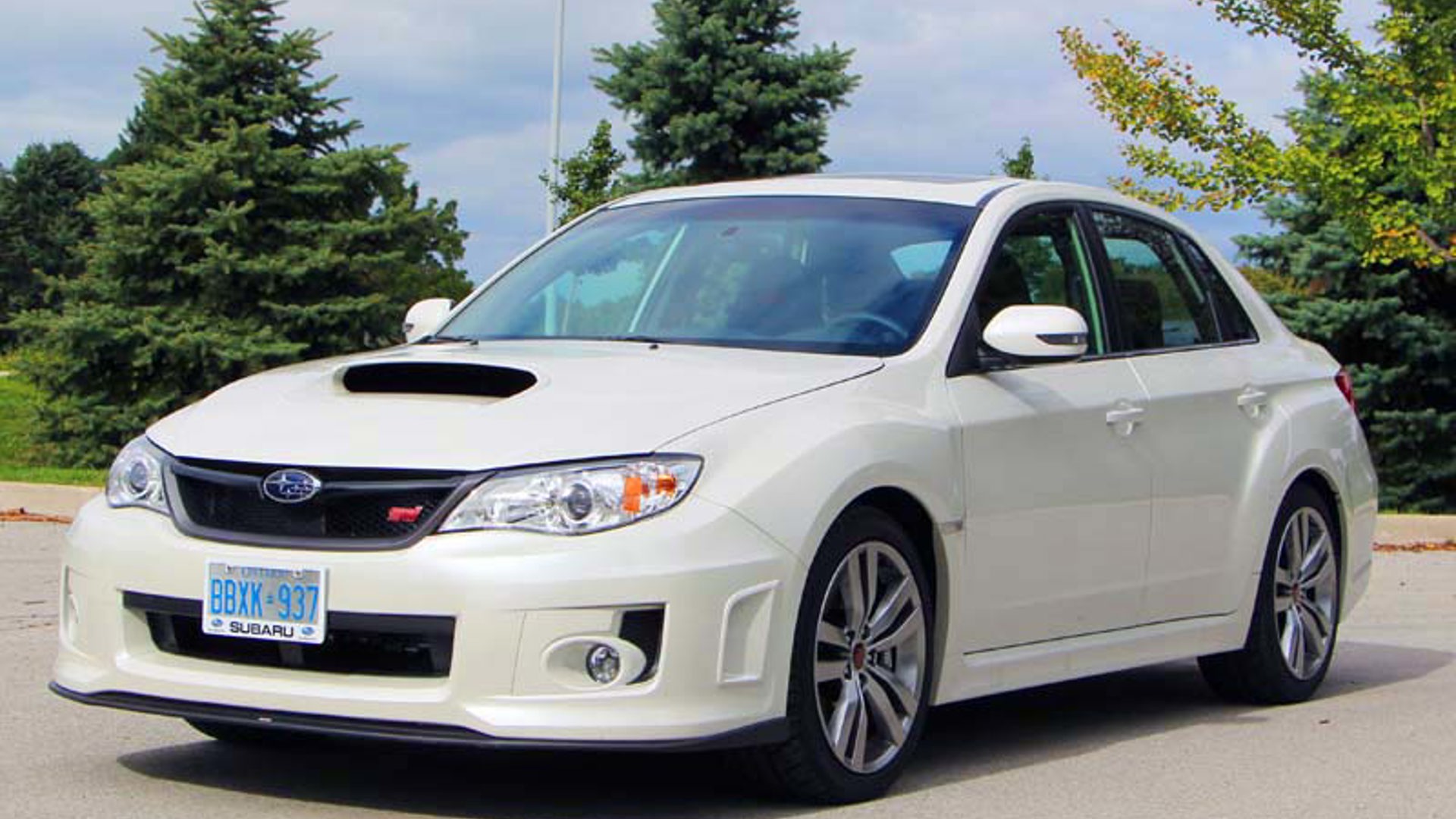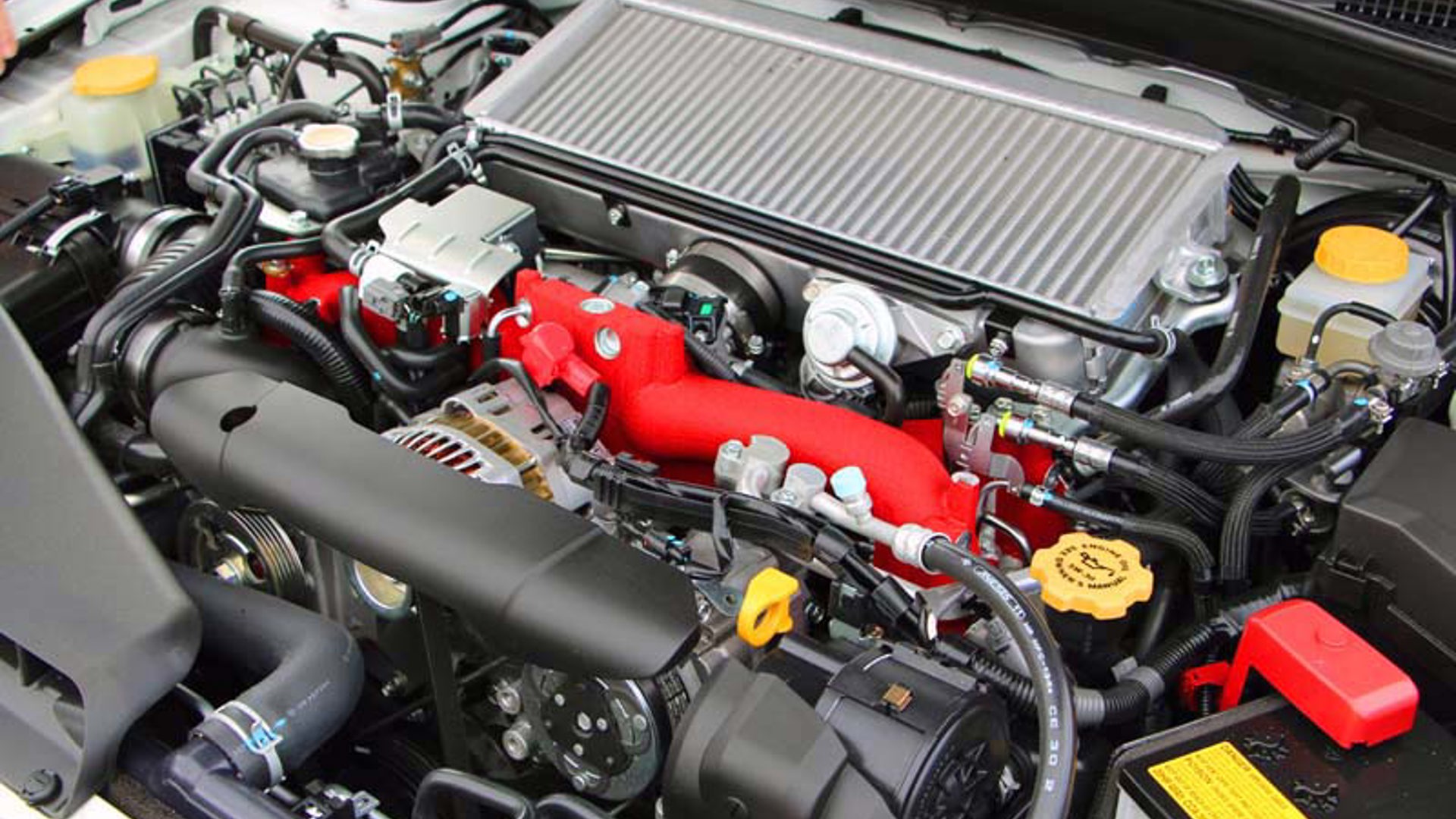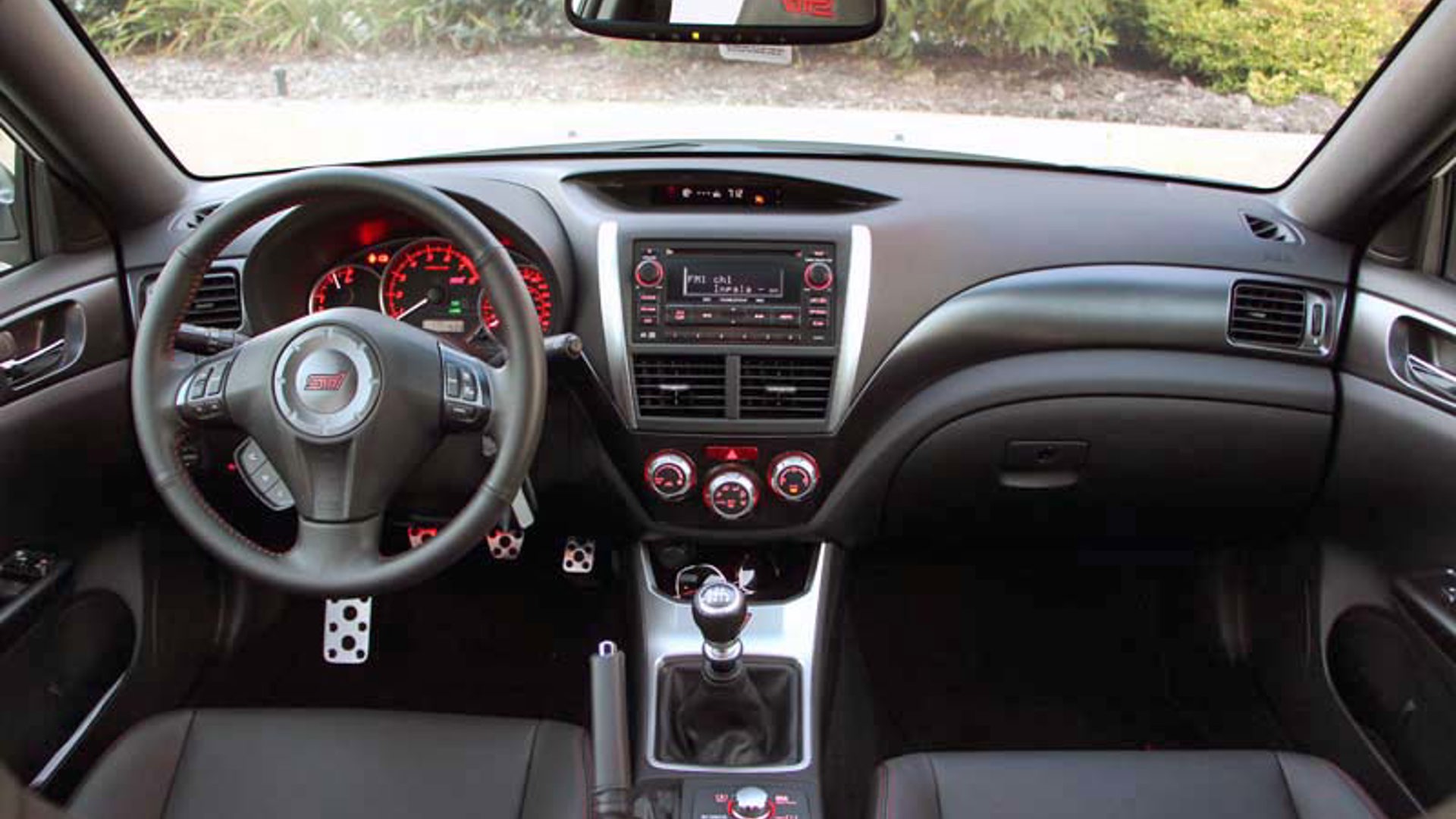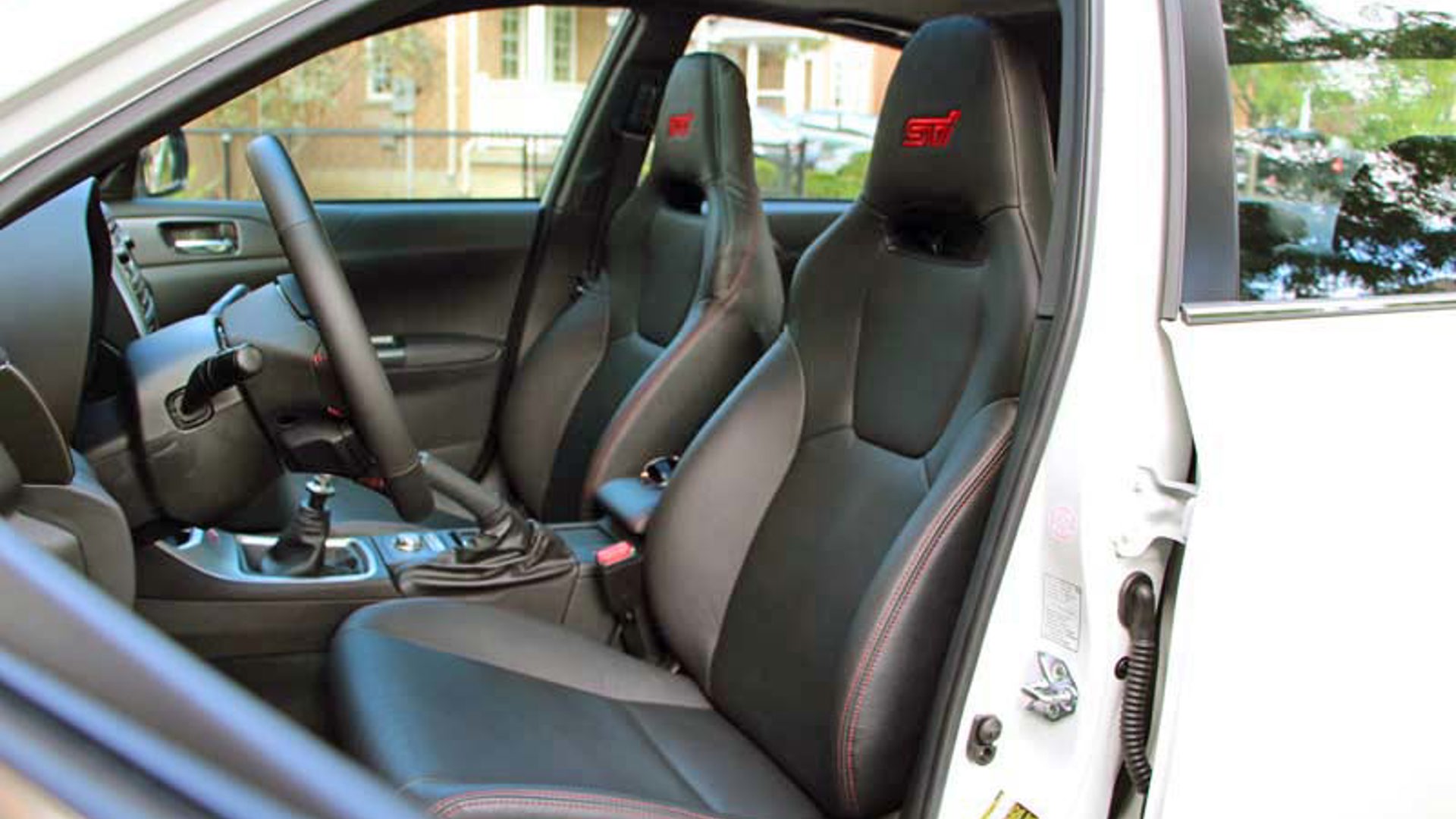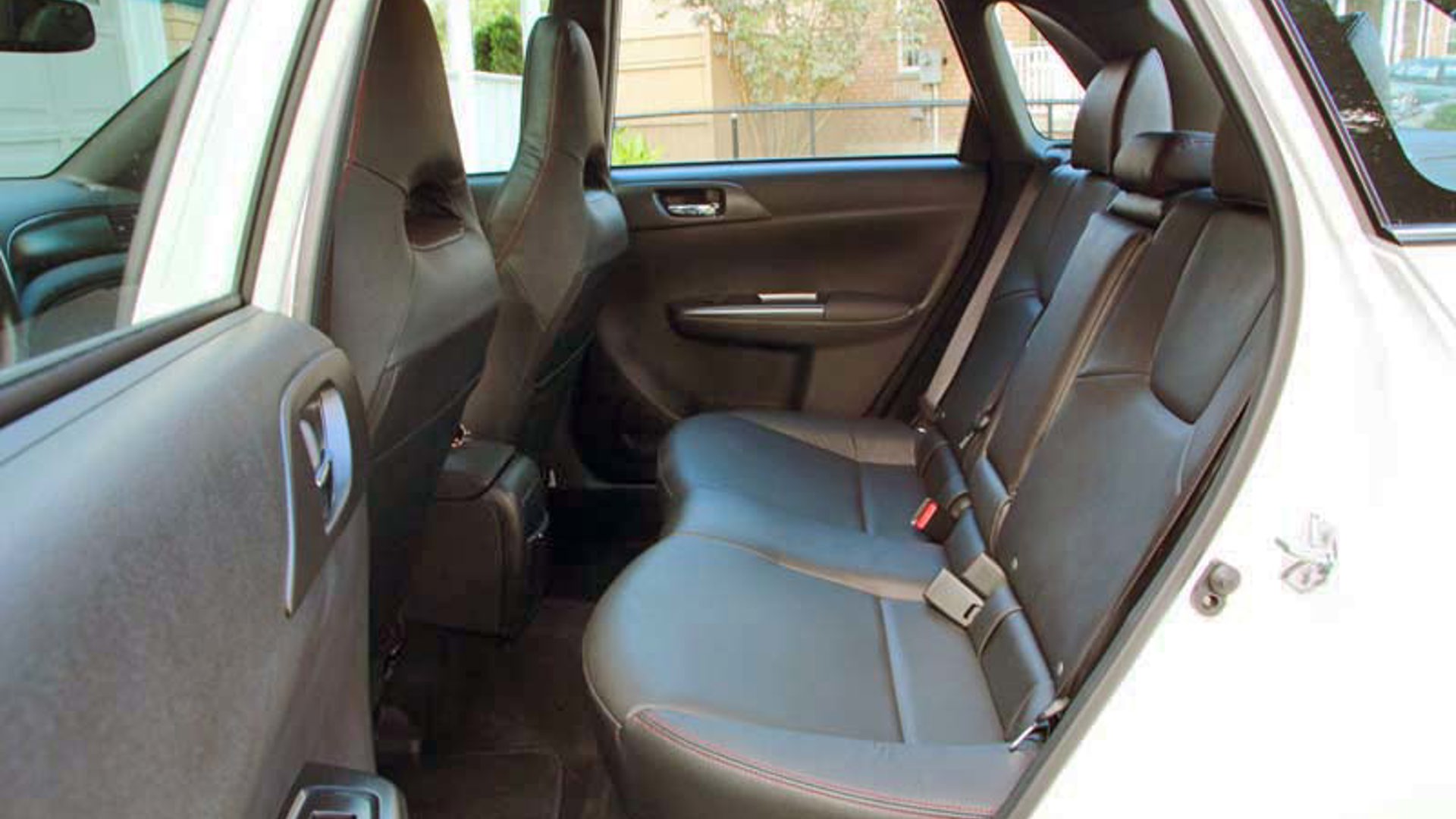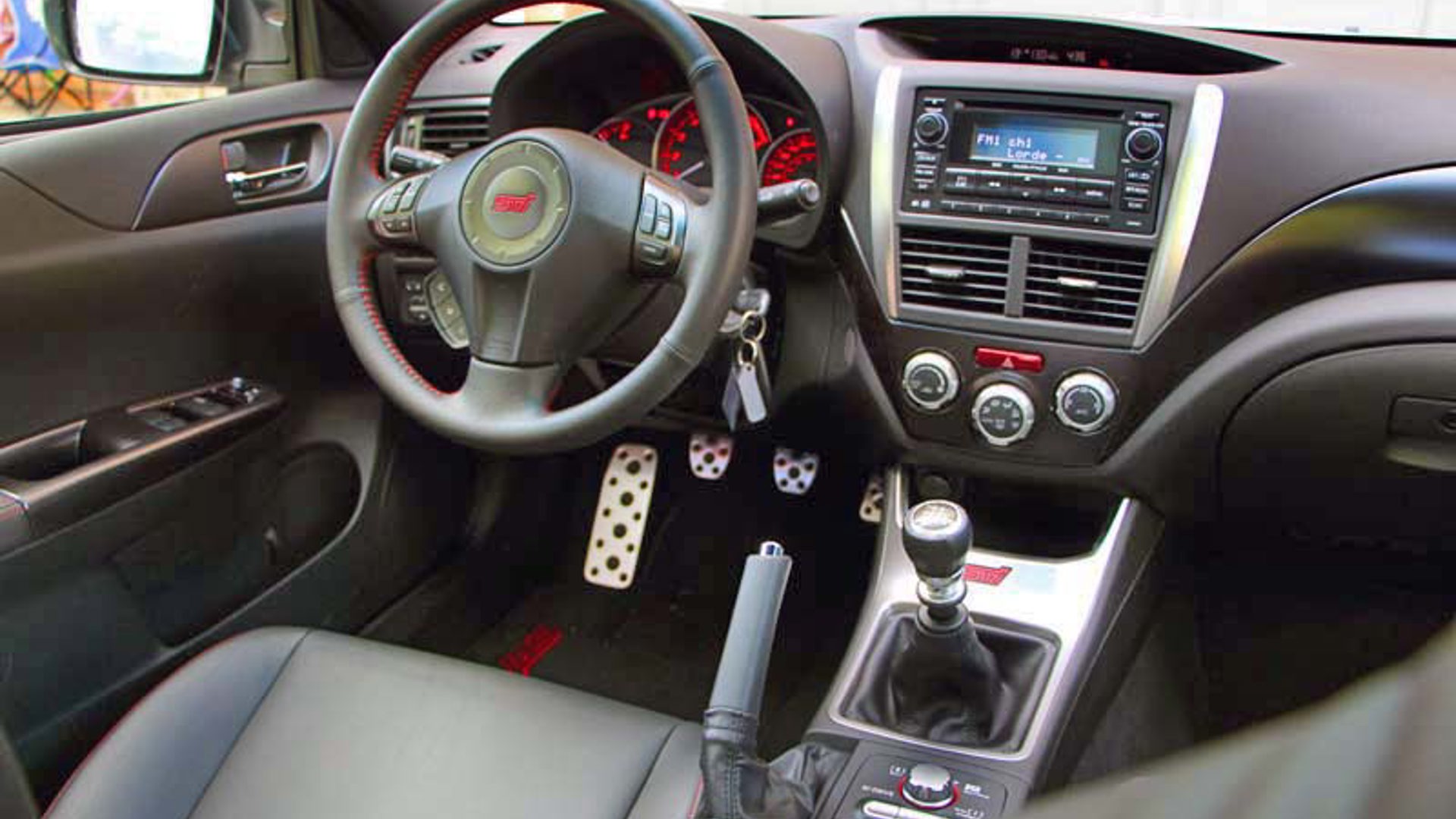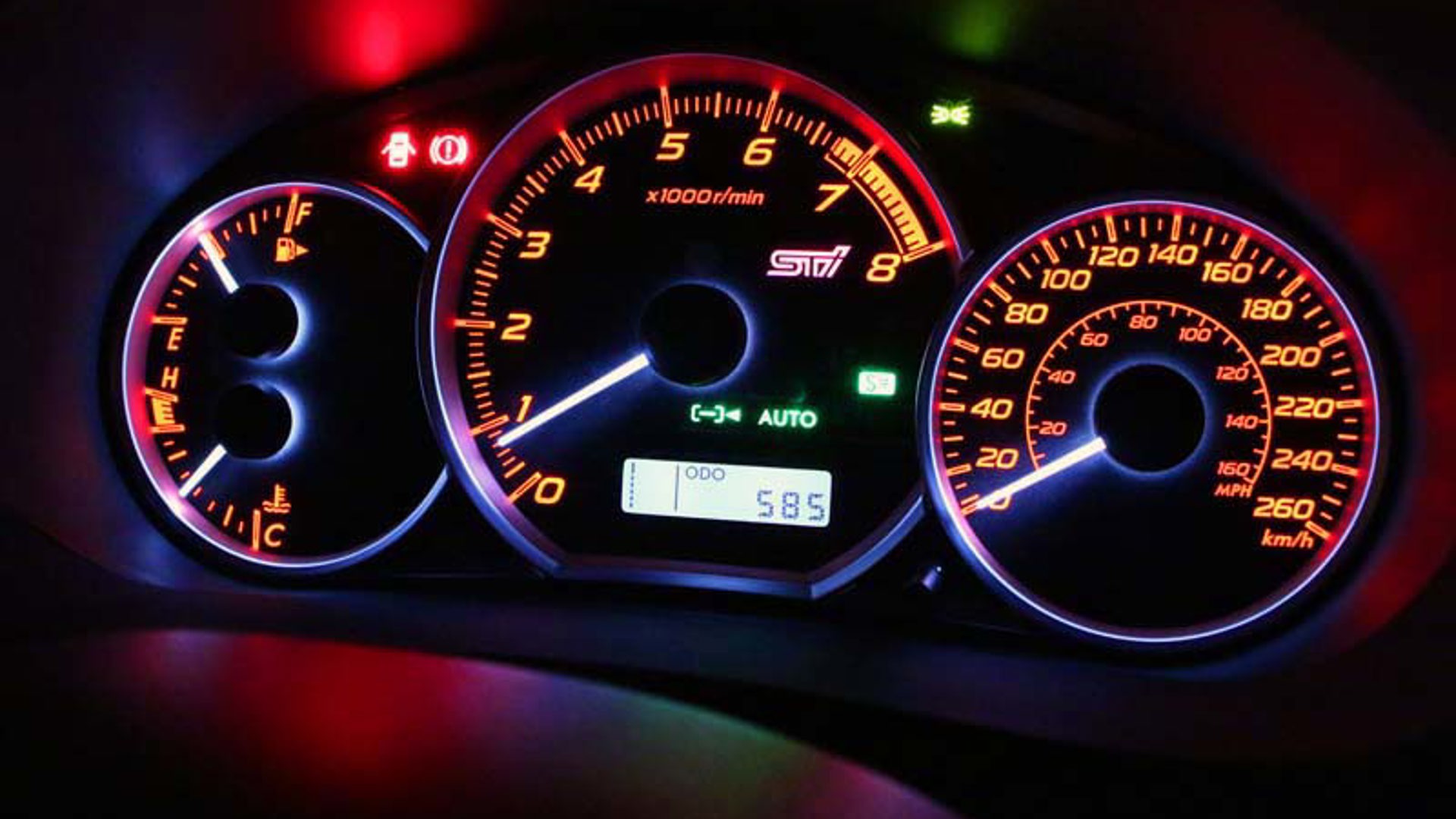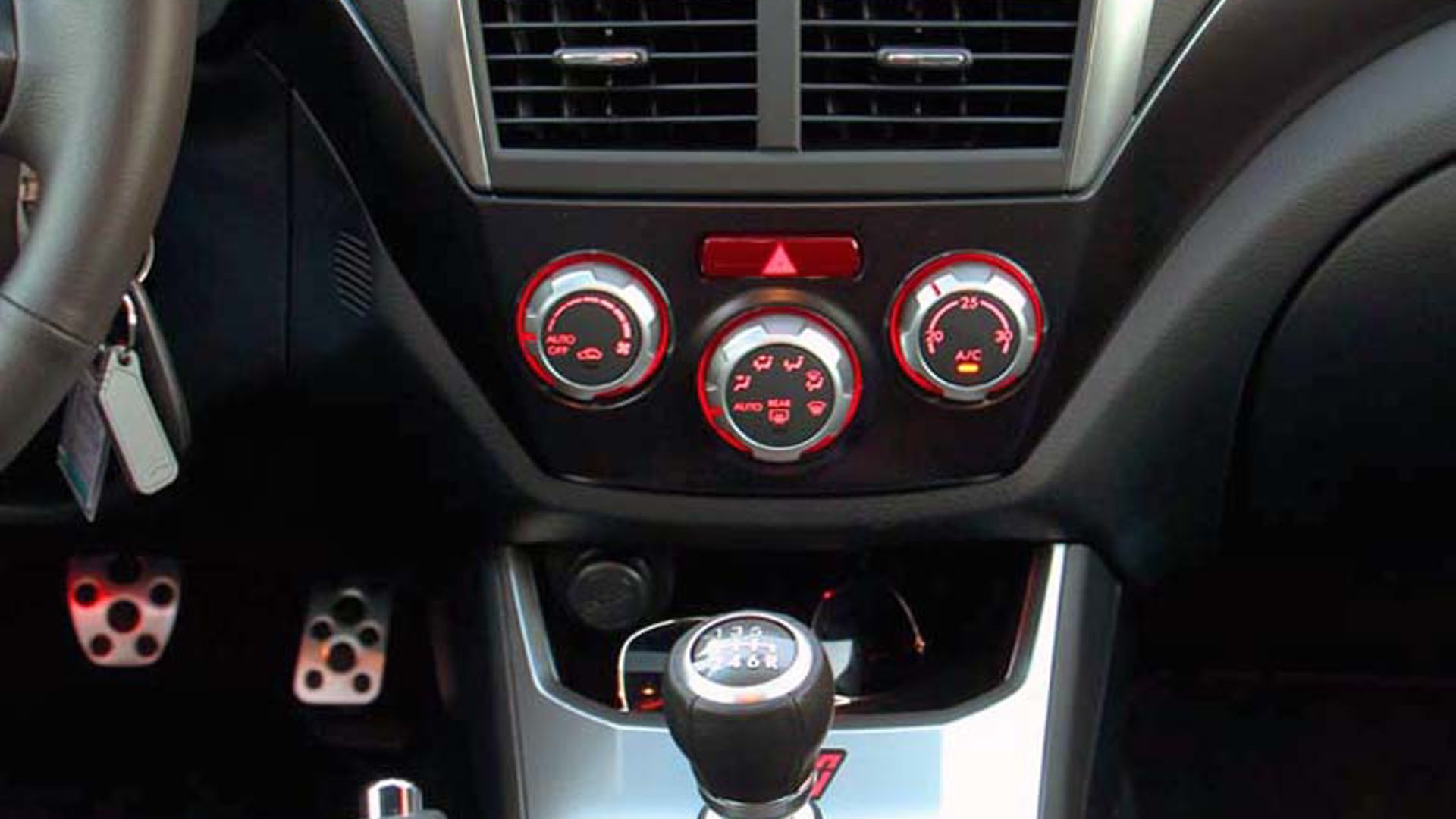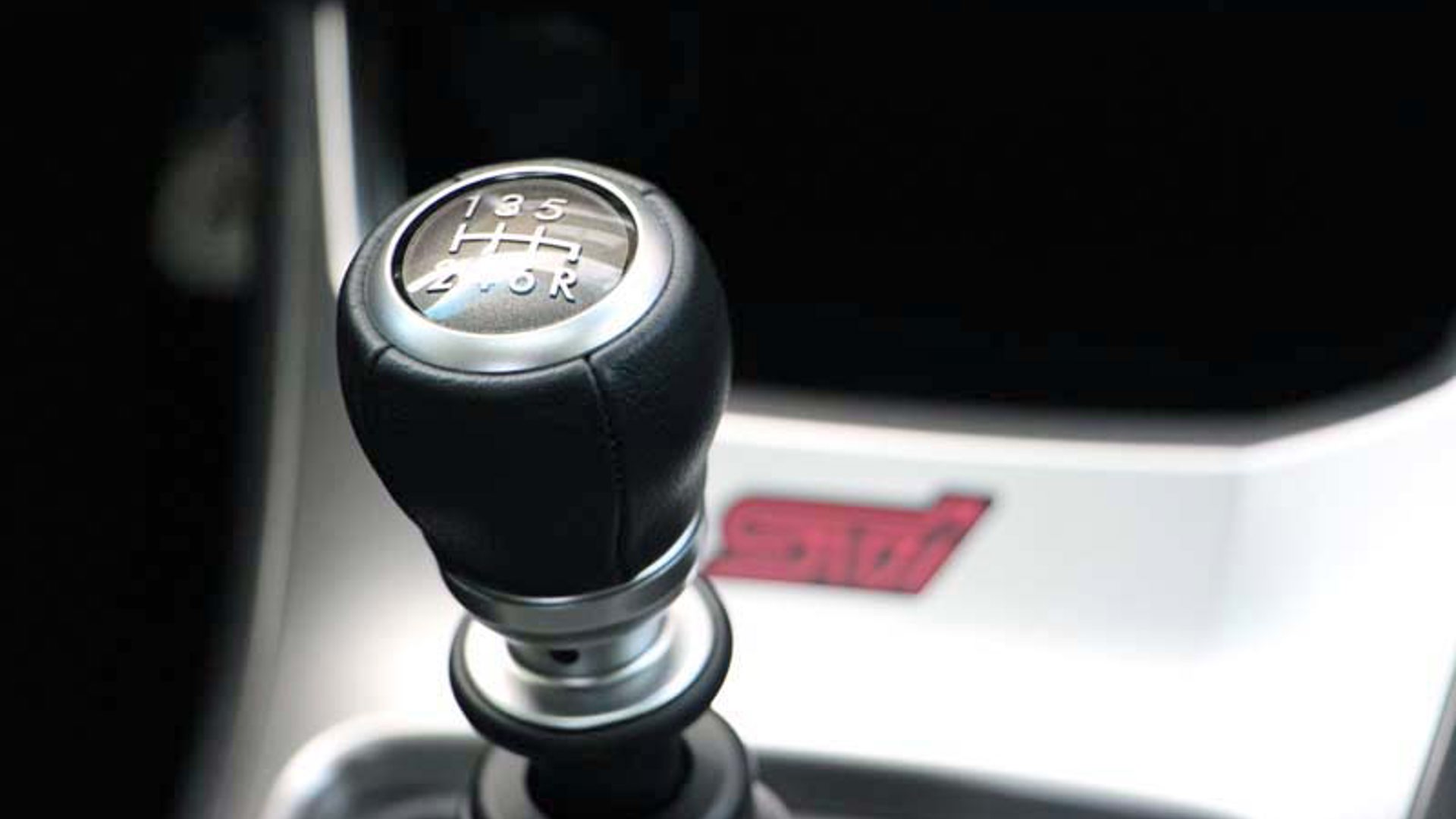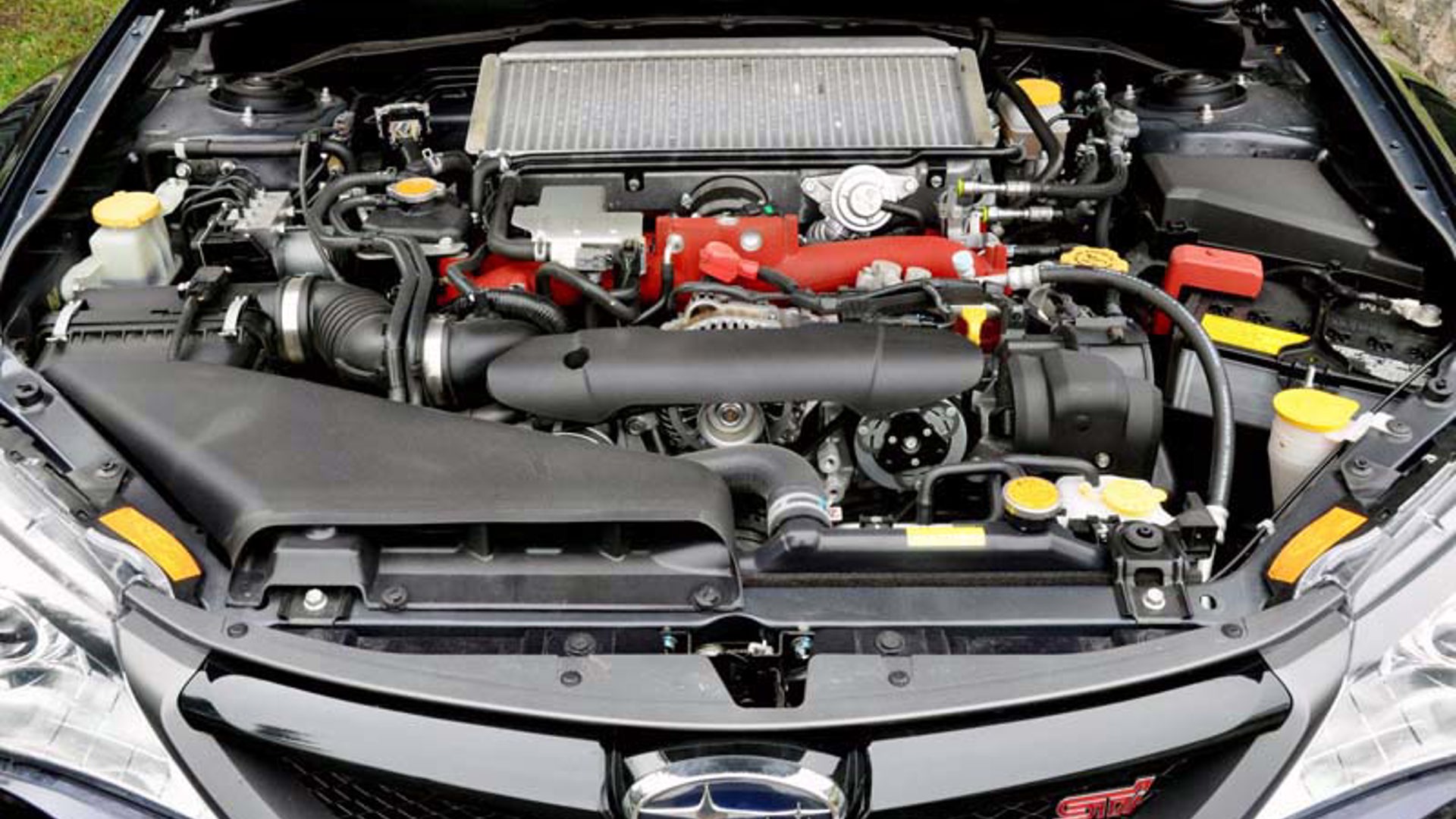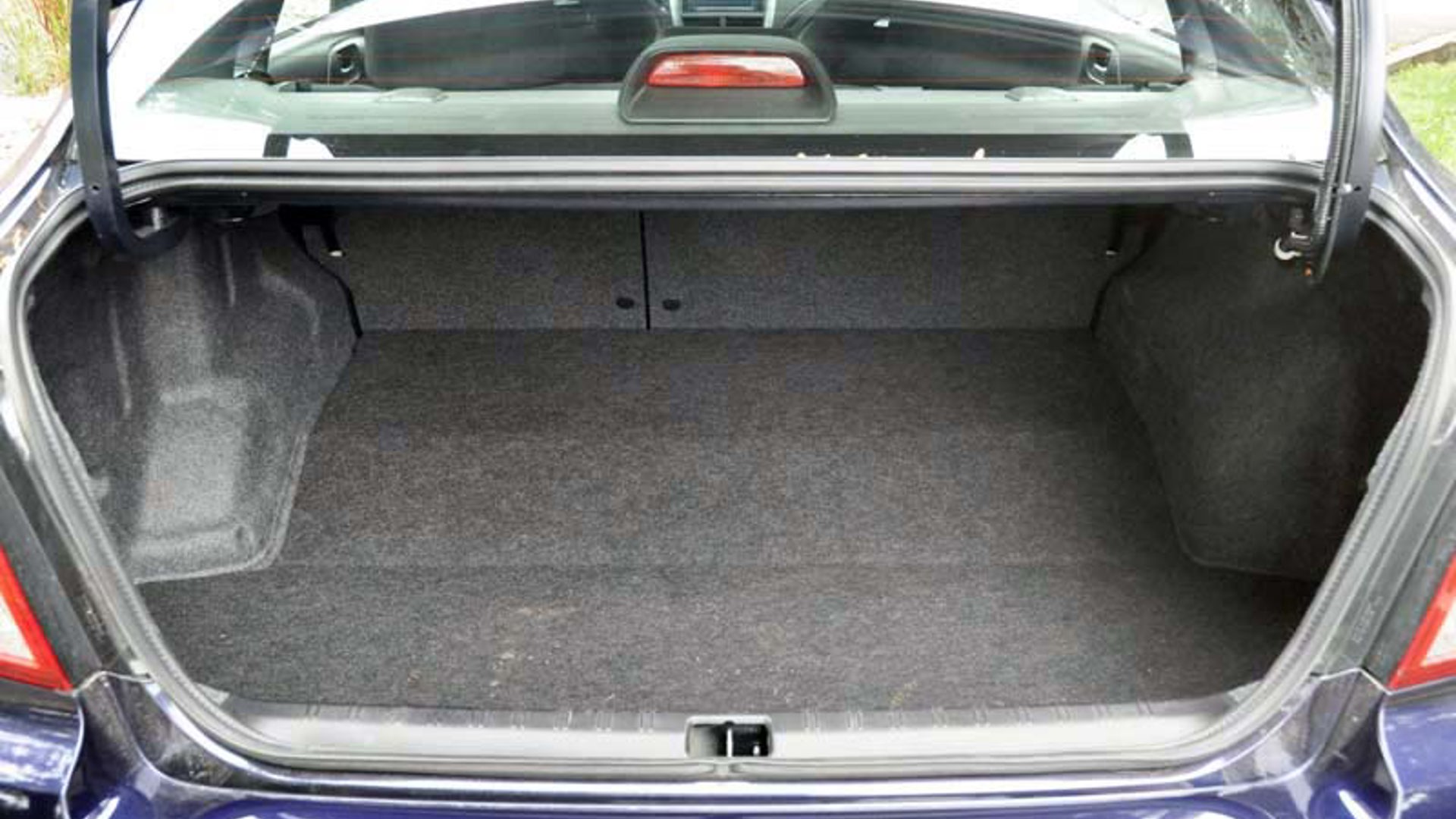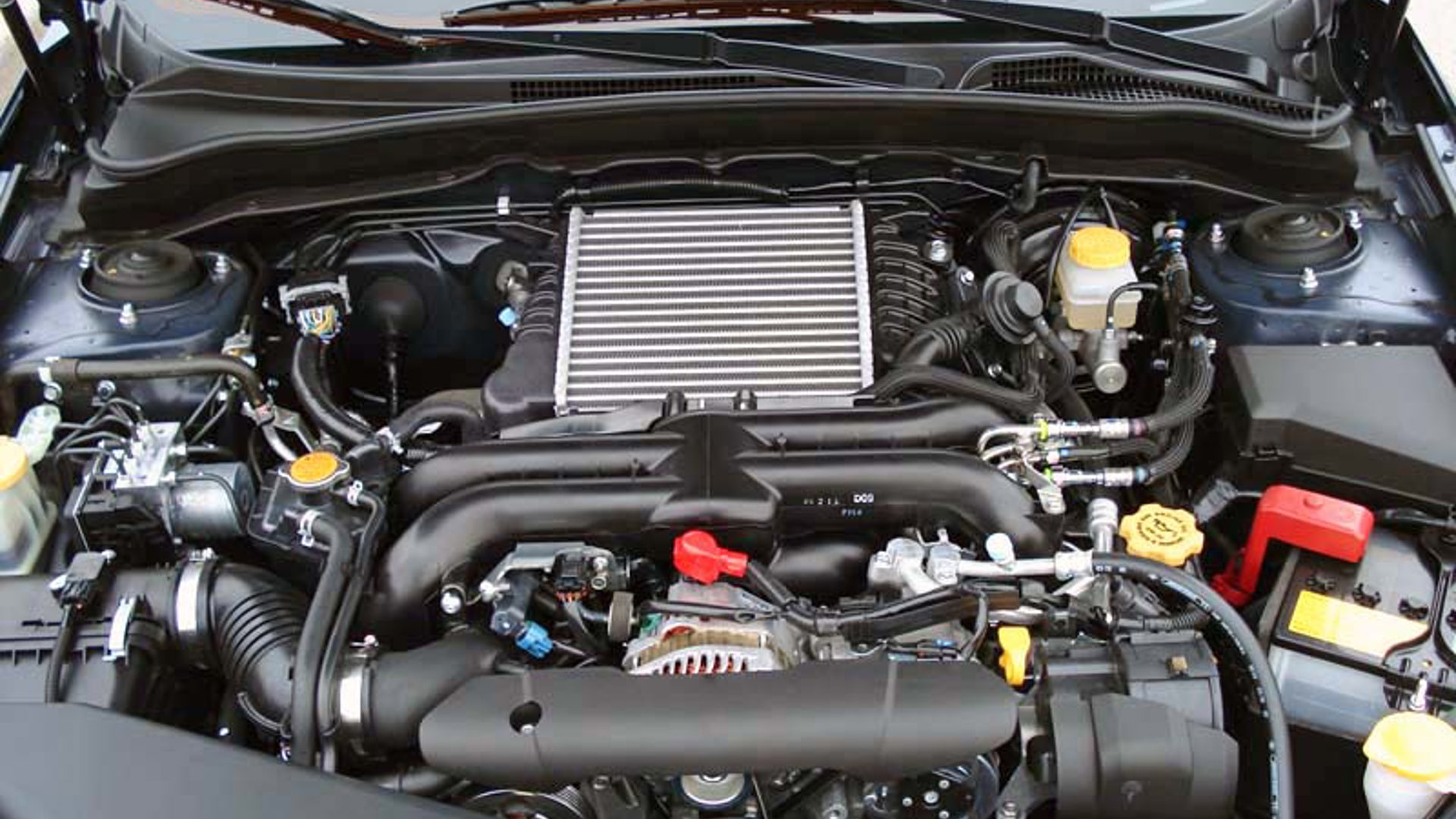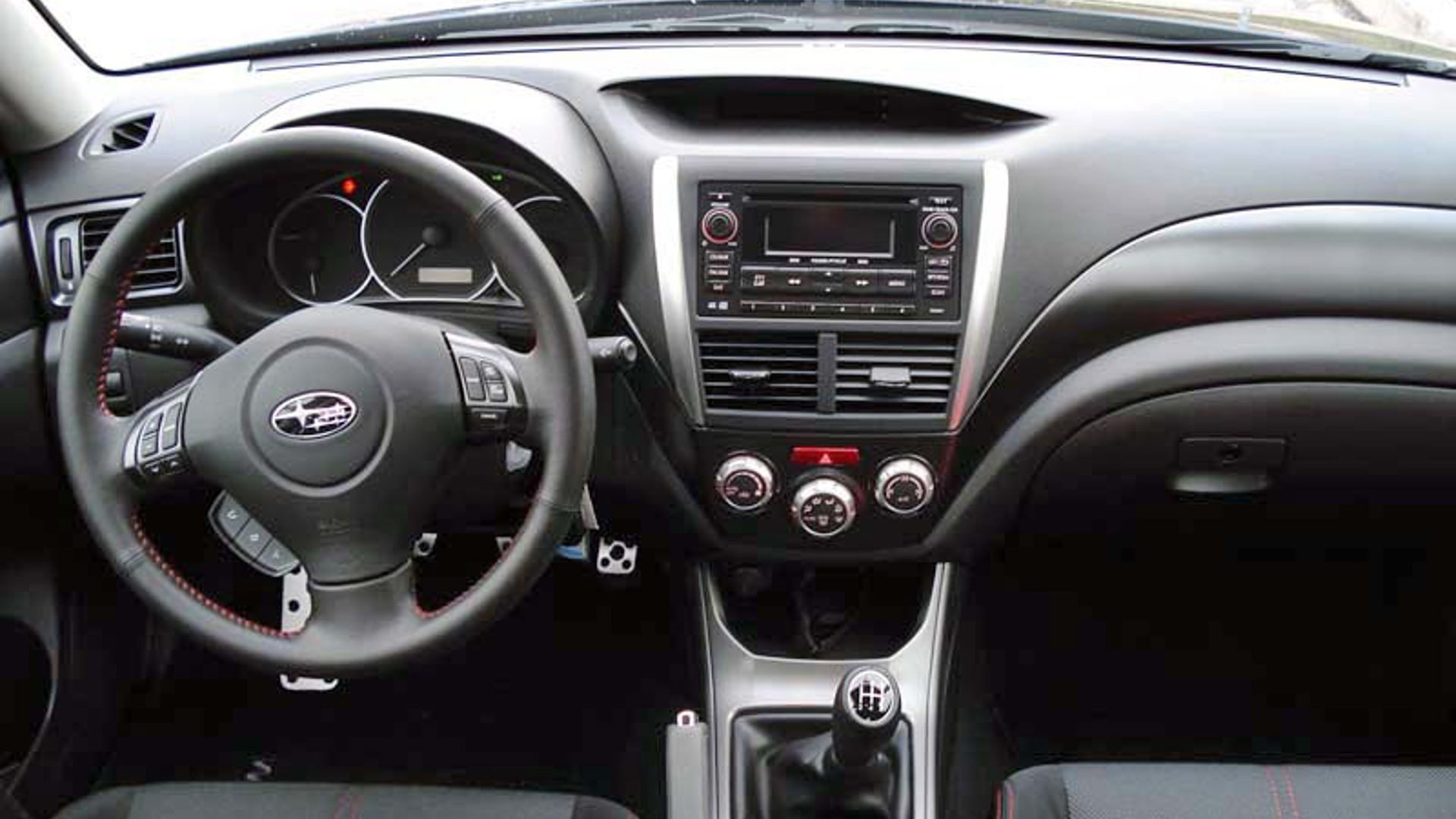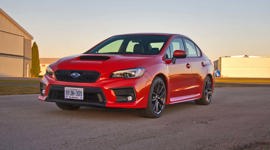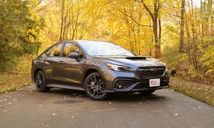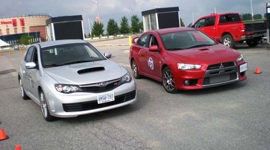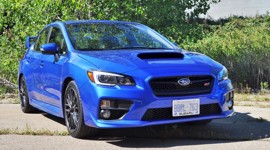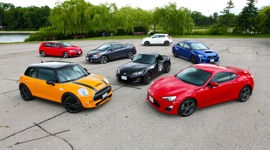Vehicle Type: Sedan / 5-door
Commonly praised in this generation of WRX and STI are the acceleration, handling, seat comfort, and all-out fun-to-drive factor.
History/Description: The Subaru Impreza WRX hit the market in its last-generation model for 2008 with a 224 hp turbocharged flat-four engine, five-speed stick, and the Japanese automaker’s legendary Symmetrical AWD system bolted to its underside.
A hopped-up WRX 265 model was launched for 2009, being axed in 2010 as its namesake 265 hp engine became standard for all WRX models from then on.
Both sedan and hatchback five-door models were available, with feature content including Bluetooth, heated sport bucket seats, a sunroof, leather-wrapped accents, automatic climate control, automatic lights, Bluetooth and more.
A top-performing WRX STI model was also available, increasing performance feature content and engineering to support a more powerful turbo engine, good for horsepower just past the 300 mark, and complete with Torsen differentials, a Driver Controlled Centre Differential, upgraded brakes, track-ready suspension and more.
What Owners Like: Commonly praised in this generation of WRX and STI are the acceleration, handling, seat comfort, and all-out fun-to-drive factor. Many owners appreciate the space and flexibility of five-door models, and note generous at-hand storage facilities. Winter driving confidence is rated top-notch, too.
What Owners Dislike: Common complaints of the WRX and STI include heavy fuel consumption, the requirement to be fed premium gasoline, and a cheap, low-budget interior. Some owners complain of a stiff, firm ride, which is a tradeoff for the model’s handling abilities. As the WRX and STI age, many owners complain of interior rattles, too.
Here are some owner reviews.
The Test Drive: Standard sports car checks apply to the WRX and STI, regardless of mileage or year. Plan to be patient in your search, and not to let lust cloud your judgment. Buying a used WRX or STI from the nicest, oldest lady or gentleman you can find is a great start, where possible, as opposed to buying one from an aspiring teenage parking-lot drift champ.
Confirm that the tires and brakes are in decent shape, not in need of replacing. Coax slippage from a worn clutch by applying full throttle at very low revs. Have the vehicle’s seller take you for a ride first, noting their driving style, and how well they operate the gearbox and clutch. A clutch can last the life of the vehicle, though a brutal driver can destroy one in months.
Walk around the model inspecting the condition of the paint, especially on the front bumper. Many owners complain of poor durability from the factory paint job as well as cracks in the bumper. Confirm proper operation of the driver’s seat lumbar adjustment, seat heaters and air conditioner, too.
Here’s a useful thread where a Subaru WRX STI shopper learns of some problems noted to be more common in the community, and is advised to follow the factory maintenance schedule strictly, use the highest-octane gas possible, and avoid spirited driving until the engine is fully warmed up.
A look back at the STI: Evolution of the Subaru STI
The thread also mentions some well-documented issues with blown piston ringlands, which will require an engine rebuild to fix. The main causes, as stated by the Subaru mechanic in this thread, seem to be caused by use of aftermarket parts and non-factory engine tuning. Non factory operation of the engine, particularly when ‘tunes’ are installed to boost power, can cause added strain on this part of the piston, causing it to crack.
Solution? The average shoppers should seek out a WRX or STI that’s stock, and that’s never been tuned to run higher-than-factory levels of turbo boost. A high-flow downpipe may be another supporting factor in ringland failure, as is use of non high-octane fuel.
DISCLAIMER: running a tune or a large downpipe will not automatically blow your new Subaru’s piston ringlands, though the owner’s community notes that these modifications may increase the likelihood of problems. Again, most shoppers are advised to avoid purchase of a model modified to run higher-than factory boost levels. Note that signs of a cracked piston ringland may include poor performance, oil smoke from the exhaust, or poor results on a compression test. If you suspect the seller may be trying to pass off a bill for an engine rebuild to you, move to another unit.
Have a Subaru mechanic check over the model you’re considering, noting whether a recall on the turbocharger oil supply line has been carried out. Note that a number of owners of 2009 models experienced engine failure caused by a bad batch of engine bearings. This issue happened almost exclusively at low miles and was covered by warranty until Subaru addressed the issue in production. Here’s some more reading.
Be sure the WRX or STI you’re considering has been treated to frequent, on-time, high-quality oil changes-- as these are vital to long-term turbocharger health. Signs of a bad turbo include smoke (particularly at idle when the engine is warm, but before a drive), sporadic performance under hard acceleration, and oil leaks out of the turbo housing, possibly into the ‘charge pipes’. Seek a mechanic’s help if you’re not sure how to make these checks.
Pay attention to the WRX’s idle, ensuring it’s smooth and steady at around 750 RPM. If that’s not the case, a bad sensor might be to blame. Also, although rare, some owners have reported issues with the timing belt and pulley system, which could cause excessive roughness and poor power output—not to mention engine damage. For safety’s sake, be sure to determine where the timing-belt is within its lifespan, and don’t agree to purchase a WRX or STI that doesn’t seem to be running smoothly until a mechanic checks it over.
The Verdict: As it tends to go with so many high-performance cars entering the realm of affordability, many problems seem to stem from modifying the vehicle. A stock WRX or STI with full service records, up-to-date fluid changes and a mechanical thumbs-up is your best bet for avoiding headaches.
Crash Test Scores: NA
Just two recalls.
